10:16
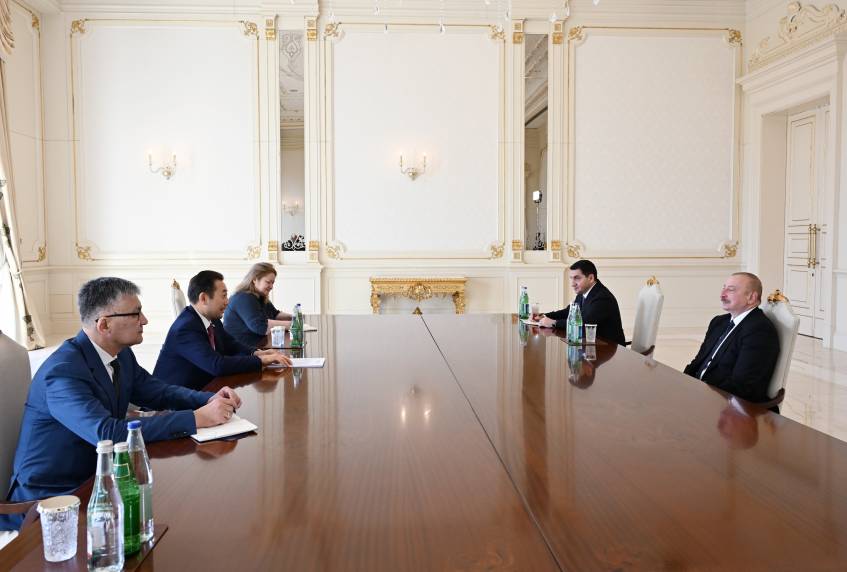
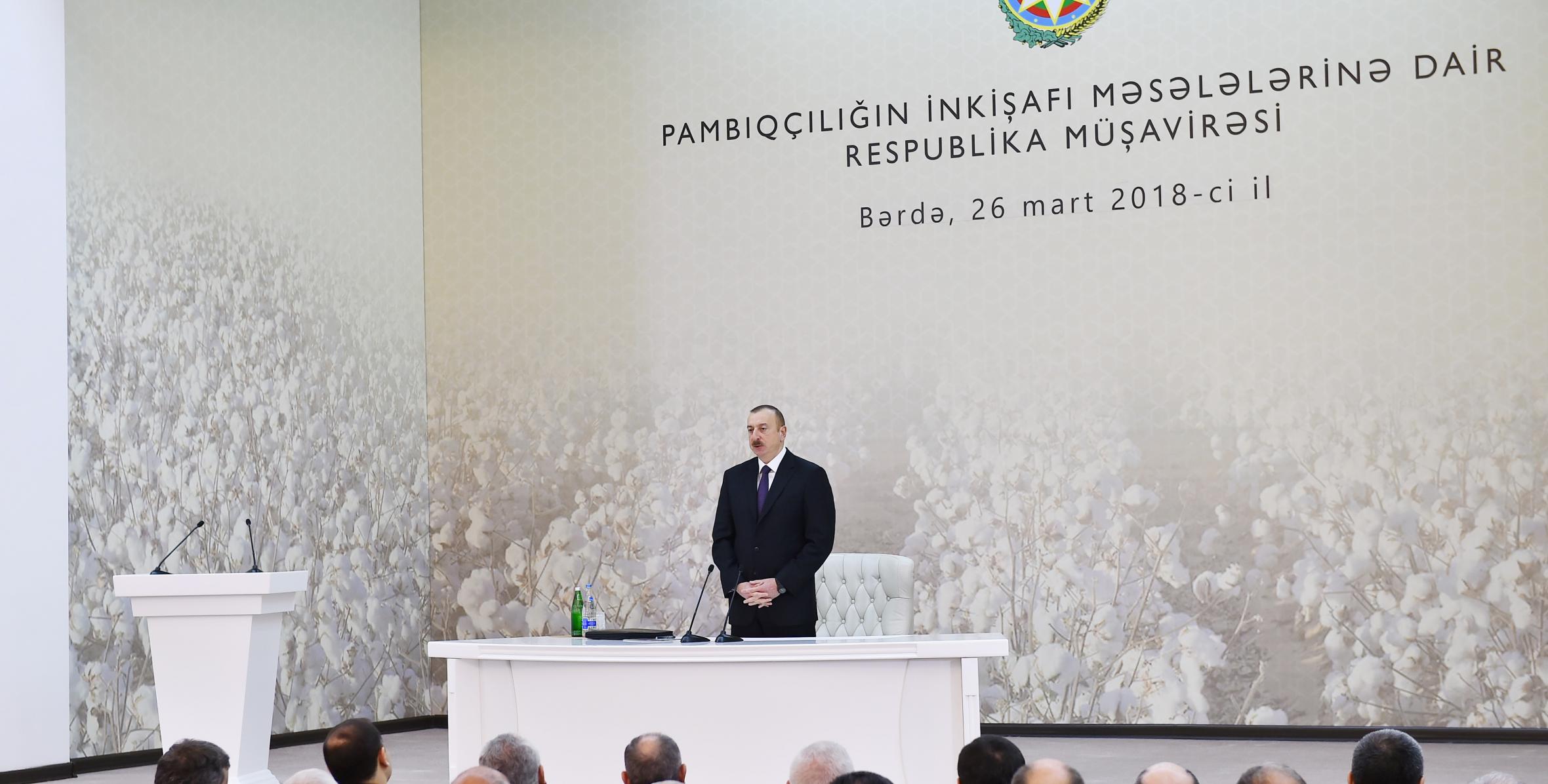
President of the Republic of Azerbaijan Ilham Aliyev has chaired a republican conference on the development of cotton-growing at the Culture Center in Barda region.
A photo stand highlighting the revival of Azerbaijan’s traditions of cotton-growing laid down by the national leader Heydar Aliyev was installed in the foyer of the center.
The head of state made an opening speech at the event.
Opening speech of President Ilham Aliyev
- At this meeting we will talk about the further development of cotton-growing in Azerbaijan. As you know, very serious state support has been provided for cotton-growing in Azerbaijan since 2016, and the results are evident. We have managed to achieve rapid development of cotton-growing in a short period of time. It is possible to say that we are restoring cotton-growing in Azerbaijan.
A meeting was held in Sabirabad in 2016 and in Saatli in late March of last year. The instructions given at these meetings are being fulfilled. Thanks to the fulfillment of these instructions, we have managed to achieve excellent results. The third meeting on cotton-growing is being held in the city of Barda today. Barda has great cotton-growing traditions. In the 1970s and 1980s, Barda was one of the districts of Azerbaijan harvesting the largest amount of cotton. The people of Barda are well aware that great leader Heydar Aliyev paid very serious attention to this sector and repeatedly visited Barda. Regional meetings on cotton-growing were held here on several occasions. In those years, the harvesting of cotton in Barda reached 120,000 tons.
Barda is developing successfully. I have visited Barda District many times as President. This is my sixth visit to Barda as President. Thanks to the instructions given during all these trips and their implementation, we have managed to achieve very serious socioeconomic development in Barda District. The district is developing successfully. Creative and landscaping work has acquired large proportions. The city of Barda is improving. Infrastructure, the road infrastructure is also being created in the villages. Several road projects have been implemented. We marked the opening of a rural road project yesterday. Additional measures will be taken to implement a new road project. Other infrastructure projects are being successfully implemented as well. Gasification of Barda is approaching 100 per cent. It is possible to say that all of the villages already have gas supply. There are only a few villages left to bring gas supply in Barda to 100 per cent.
There are no problems with electricity. Other issues are also being resolved, a new social infrastructure is being created, many schools have been built. The first ASAN xidmət center in the Karabakh region was also established in Barda. Other social projects have also been implemented, an Olympic Center, a Diagnostic Center and a Children's Hospital have been built. The people of Barda are well aware of this work, as they have been actively involved in it. The state will continue to pay great attention to the development of Barda District. In particular, there are plans to take additional measures for the development of agriculture in Barda.
Of course, cotton-growing is of particular importance for the development of agriculture. It is no coincidence that great attention was paid to cotton-growing in Azerbaijan in the 1970s and 1980s, and 22 per cent of arable land was allocated for cotton at the time. Subsequently, of course, we began to deal more with food security issues, and cotton areas were reduced. We will talk about that today. However, the work done in the field of restoration of cotton-growing in the last two years shows once again that this sector has a great future. Workers and farmers are receiving a large income from this. There is also a great benefit for the economy of the country.
As I have already noted, the rapid development of cotton-growing in Azerbaijan in the 1970s is associated with great leader Heydar Aliyev. In 1969, when he came to power, 300,000 tons of cotton were harvested in Azerbaijan. During his leadership this figure tripled, as a million tons of cotton were picked in Azerbaijan in 1981. After Heydar Aliyev’s departure from Azerbaijan, cotton-growing and indeed all other sectors started to experience a recession. In 1990, cotton procurement in Azerbaijan decreased from one million to 500,000 tons. In the years of independence, cotton production was practically dead. There are several reasons for that. Of course, we must admit that we did not have serious material opportunities in the first years of independence. Azerbaijan was in a very difficult situation. In particular, as a result of the incompetent and treacherous activity of the anti-national government, the PFPA-Musavat tandem, our country was on the brink of a precipice. As a result of the economic, political and military crisis, our country found itself in an extremely difficult situation. The inexperienced people who came to power had no idea about the economy. Nothing was done for the development of agriculture either. In general, the chaos, anarchy and confusion in Azerbaijan did not allow the country the opportunity to develop. Only after 1993, when the people turned to the great leader and asked him to power, did agriculture and indeed all other sectors start to experience development. Reforms were carried out. I believe that the most important decision connected with the development of agriculture at the time was the exemption of farmers from taxes.
In addition, the country was faced with so many serious problems in the first years of independence that cotton-growing was not among priority issues both from a material point of view and in terms of timing, of course. The country was faced with very serious challenges. There were major threats. In the 1990s, priority issues were the restoration of stability, attraction of major investment to Azerbaijan, and the successful implementation of the oil strategy as the main means for the comprehensive development of Azerbaijan.
On the other hand, we started a serious transition to a market economy, which, as it was believed, should regulate everything itself. In particular, it was believed that the principles of a market economy would regulate and resolve issues related to agriculture. Of course, there is a lot of truth in this approach but, at the same time, as we saw in the example of recession in cotton-growing, agriculture cannot develop without serious state support – not only in Azerbaijan but also in all other countries. We know that even the leading states which have made great strides in the development of agriculture provide major subsidies to agriculture. There is extensive state support. In many cases protectionist measures are taken. Every country tries to protect its market. Of course, we also provide serious state support for the development of agriculture in Azerbaijan.
In recent years, we have made great strides in the development of agriculture, in particular in matters of food security. Our main focus in recent years has been on food security. Cotton, grapes, fruits and vegetables were grown in Azerbaijan in Soviet times, but the main food products were imported from other republics. Therefore, we first tried to meet the domestic demand with local products, worked on that and made investments. I believe that we have made very serious progress in addressing food security issues.
Today, we either fully provide ourselves or are very close to this goal in the main sectors that contribute to food security. Meat production is at about 100 perc cent – Azerbaijan fully provides itself. The production of milk is at about 80-85 per cent. The production of poultry meat in the next year or two will reach 100 per cent and a large export potential will be created. We not only provide ourselves with eggs but also export them. So these are priority sectors.
Technical crops were overlooked. I want to say again that there were several reasons for that. One of the reasons was connected with the opinion that farmers know better what to plant and what to cultivate. This sector did not enjoy particular state support. As for private companies engaged in cotton-growing, they did not make proper effort either. They did not pay proper attention to cotton-growing and did not make the necessary amount of investments, which is why cotton-growing in Azerbaijan gradually came to a complete decline. Suffice it to look at statistical indicators to see that 2015 was the worst year for cotton-growing in history. Cotton was sown only on 18,000 hectares and only 35,000 tons of cotton were harvested.
Since the end of 2015, we started to seriously deal with this issue. As I have already noted, meetings were held in 2016-2017. In 2017, the State Program for the Development of Cotton-growing was adopted. We began to systematically engage in this work and can already talk about excellent results today. Over two years, the harvesting of cotton in Azerbaijan increased from 35,000 to 207,000 tons. In other words, we managed to increase cotton production six times in a matter of two years. And this is not the limit. Today we will talk about the work to be done to increase the production of cotton.
The state has purchased many pieces of modern machinery – about 500 cotton harvesters. A considerable part of them has already been imported. Other machinery includes tractors produced in Azerbaijan, as well as foreign machinery and trailers. I got acquainted with some of this equipment in Barda yesterday. Major funds are being allocated for these purposes. The provision of fertilizer is improving. It is possible to say that the Azerbaijani state has took this sphere upon itself. Fertilizer is being provided with a 70-percent discount. Despite the progress achieved in this area, we should work even harder. The quality of fertilizer should get better – this area also enjoys a lot of attention.
Major projects have been implemented in the field of land reclamation in recent years. Land reclamation measures have been taken on tens of thousands of hectares of land. In Barda and other districts, for example, large funds have been allocated to this sphere. Other comprehensive measures have been taken as well. A centralized management system on the development of cotton-growing has been set up. The Presidential Administration, local executive bodies, companies, farmers and workers have made joint efforts and achieved good results. The best indicator of this is the figures achieved in the last two years.
Cotton-growing is a labor intensive sector. In connection with the development of cotton-growing, we have also created tens of thousands of jobs. In general, the number of people engaged in cotton-growing in recent years is approaching 200,000. The overwhelming majority of these people did not have a job before, but they have work now. Of course, this is a very serious social sphere aimed at eliminating unemployment, especially in the regions. I mentioned this in my earlier speeches and want to say again today that among the results achieved in the development of cotton-growing, it is the social factor that is in the forefront for us. Job creation is our main goal, and we have managed to achieve that.
At the same time, cotton-growing is a very profitable sector – it generates a good profit. Cotton is an exportable product. There is no need to look for markets for exports because the products are sold on stock exchanges. Cotton-growing gives a great impetus to the processing industry. Ginning plants are in operation now. Of course, we will talk about how they could work with even greater profitability. This sphere has also received a major impetus. At the same time, this has provided great support for local production. We currently produce pesticides which were never produced in Azerbaijan before. Starting from last year, we began to produce pesticides. This year, a large fertilizer plant will start operating in Sumgayit. We will provide ourselves with fertilizers. The production of irrigation equipment has already been established in Azerbaijan. Using this equipment, we can increase the yields. A light industry park has been established in Mingachevir. I already spoke on this issue and shared my opinion at previous meetings. All the necessary instructions have been given. Two new enterprises of the Light Industry Park started operating in Mingachevir in February of this year. More than 700 people work at these enterprises. A total of 20,000 tons of yarn will be produced. This is almost half of the yarn produced in the old days. If cotton-growing did not develop at a rapid pace in Azerbaijan, there would be no need for these enterprises. These factories can function successfully only on the basis of domestic raw materials.
Just look at how much benefit cotton production brings to the country's economy: first of all, employment; cotton production brings currency to the country; develops the non-oil sector, the non-oil industry; gives an impetus to local production; creates jobs not only in cotton-growing but also in other areas. Today Azerbaijan is the world's leading country in terms of the development of cotton-growing. I do not believe there is any other country in the world that could have increased the harvesting of cotton more than six times in just two years.
We have achieved all this as a result of targeted measures. I want to say again: if cotton-growing did not enjoy state support, we could not have achieved this. In 2015, only 35,000 tons were harvested, while this year we would have picked 20,000 tons perhaps, and even that is not certain. Thus, cotton-growing would be completely destroyed. We did not let that happen. We have saved cotton-growing, restored and will continue to restore it.
At today's meeting, we will hear information about the work done and also talk about plans for the future. I should note that in the coming years our main goal will be to increase the yields, because last year's experience shows great progress. About 90,000 tons of cotton were collected in 2016 and 207,000 tons last year. Although we have a large harvest, the yield per hectare is not at the proper level. In Barda district, it is at a very good level – more than 26 quintals. But in some other districts it is very low. The reasons are being analyzed and should be analyzed so that the errors made are not repeated in the future and the yields are even higher.
X X X
Speakers at the conference included head of Barda Executive Authority Vidadi Isayev, Deputy Director General of “MKT Istehsalat Kommersiya” LLC Rovshan Hasanov, head of Tartar Executive Authority Mustagim Mammadov, farmer from Bilasuvar region Fazil Musayev, head of Aghjabadi Executive Authority Shahin Mammadov, acting Director General of Azerpambig LLC Zakir Azimov, farmer from Saatli region Nizami Mammadov, chairman of the Irrigation and Water Management Open Joint-Stock Company Ahmad Ahmadzade.
President Ilham Aliyev made a closing speech at the conference.
Closing speech of President Ilham Aliyev
- As I mentioned in my opening remarks, as a result of comprehensive measures we managed to achieve a rapid development of cotton-growing in Azerbaijan in a short period of time. The main goal today is to maintain the positive dynamics, increase it and take additional steps related to the further development of cotton-growing. This year, cotton will be sown in 22 districts, and I hope that the yields in all these districts will be higher.
In today's speeches, heads of executive authority of the districts which have achieved high yields, as well as farmers, spoke about the work done. Their words and the work they have done show that it is possible to achieve high yields. If one farm collects 55, 50, 40 and 35 quintals from a hectare, it means that this is possible. We should try to increase the yields in the districts.
There are some problems related to yields that need to be eliminated. These problems were also mentioned in today's speeches. We should make sure that all these errors and shortcomings are seriously analyzed, and we are doing that. In the future, these mistakes should not be committed again, and the development of cotton-growing in Azerbaijan should be ensured only by increasing the yields. It is necessary to study and widely apply the best practices. Negative experience should also be seriously analyzed and serious measures should be taken to avoid mistakes in the future. Last year, the average yield was 15.2 quintals. Of course, we can’t be pleased with that. This is a very low indicator. Although, as I already mentioned, we have managed to increase the procurement of cotton six times in a short period of time, in a matter of two years, and have handed over more than 200,000 tons of cotton, we can’t be content with the yields, of course. If we had managed to achieve average yields of 20 quintals, we could have harvested 270,000 tons of cotton last year.
The table I have lists the districts noted for both high and low yields. I would like to provide some data. Coming in first place in terms of the yields is Tartar District with 27 quintals, which is a very good indicator. In second place is Barda District with 26.3 quintals. Third is Bilasuvar with 21.8 quintals, fourth is Agjabadi with 21.5 quintals, fifth is Agdam District with 20.6 quintals and then Jalilabad District with 20 quintals. In all other districts the yields were below 20 quintals – about 18, 15 and 13 quintals. But there are districts where yields were below 10 quintals. I want to name these districts as well, so that they draw the rights conclusions and build their work correctly in the future. So first from the bottom is Neftchala District with 8.2 quintals, second from the bottom is Hajigabul with 8.3 quintals, then Samukh with 8.8 quintals, Ujar with 9.3 quintals and Imishli with 9.7 quintals. I have mentioned the districts where yields were below 10 quintals. In other districts they were more than 10 quintals. But this, of course, cannot be good enough for us. Therefore, I want to say again: it is now necessary to pay serious attention only to the yields. We must resolve all outstanding issues. I think that this is possible – we simply need to build our work correctly. I should also note that we have been seriously engaged in cotton-growing for only three years. Of course, at present there are problems with the selection of lands, agricultural measures, irrigation, fertilizers, pesticides, and their quality. Therefore, it is necessary to do the right analysis in order to avoid these drawbacks in the future.
We should use the system of alternate sowing. This will also give a serious impetus to the development of grain growing. We must increase the capacity of processing enterprises. At the present time, new cotton ginning plants are under construction. This is a very positive fact. I am sure that the procurement of cotton will increase even more in the future, and we will need new processing enterprises. At the same time, the absolute majority of the ginneries operating today have been there since Soviet times. They are already out of date. They do operate, but not with proper profitability. Therefore, we should gradually upgrade the processing industry. The construction of new cotton ginning plants will also have a positive impact on quality and yields.
It has already been noted here and I want to say it again that farmers should be provided with quality fertilizers. There were certain problems related to the quality of fertilizer in the past season. The state has practically taken this large scope upon itself. The state assumes the cost for 70 per cent of fertilizers. But it is necessary to import high-quality fertilizers, and relevant bodies should seriously monitor this issue this year.
Some speakers shared their thoughts related to machinery. Of course, we could not fully provide ourselves with machinery. This has natural reasons. We have been acquiring machinery for only two years. Moreover, we are all well aware that very serious work has been carried out in the past two years related to our budget expenditure. In other words, we have reduced unnecessary costs. In order to maintain our budget revenues in stable condition, we, of course, are paying special attention to all expenses. Despite the fact that oil prices have been at a very low level in the past two years and have not been fully restored this year either, very large funds have been allocated for agricultural machinery. If we look at budget expenditure, we can see that large amounts have been allocated to purchase machinery. Over the past two years, more than 300 million manats has been allocated for agricultural machinery. A significant part of that is cotton harvesting machinery. Farmers are well aware that we are acquiring the most advanced machinery. We are purchasing the world's top cotton industry equipment. In the previous years, 370 cotton harvesters were purchased, and an additional 100 harvesters will be imported this year. If necessary, we will continue to acquire equipment in the future. For information, I want to inform you that whereas 10,000 units of equipment were purchased last year, 5,700 of this number were purchased for the needs of cotton-growing. More than 3,000 units of equipment will be purchased for cotton-growing this year. In general, machinery worth a total of 160 million manats is be purchased from our state budget this year, of which 118 million will be spent on cotton-growing machinery. So these figures in themselves show how much attention we are paying to cotton-growing. Attention is being paid to other branches of agriculture, equipment is and will continue to be purchased to improve the efficiency of these sectors. So we are only in the beginning, so to speak, and should try to ensure that there are no problems associated with machinery in the coming years.
Some suggestions about seeds have been made here. This is a very serious issue, farmers are well aware of that. Very much depends on the seeds and their quality. Farmers should be provided with better seeds. It is necessary to encourage the development of this area. At the same time, I agree that local varieties of seeds should be grown, and we will address this issue as well.
The quality of pesticides was sometimes not at the proper level last year, and this had a very negative impact on yields. Therefore, this year, there should be very rigorous control over this area this year and we should import only high-quality pesticides. If we consider that Azerbaijan has already launched local production in this area, I am sure there will be no problems here in the future.
Of course, irrigation plays a special role in the development of cotton-growing and the yields. One of the speeches made today said how much work is being done in this area. In general, it is possible to say that irrigation is in the foreground among all infrastructure projects – first of all, because other infrastructure projects, the projects of electricity, natural gas, road infrastructure, drinking water are almost complete, and also because this sphere directly affects the development of agriculture. Last year, we arranged water supply for 100,000 hectares of land. This year, it is necessary to supply water to previously non-irrigated lands covering at least 100,000 hectares, and most of them are related to cotton-growing. Work is also under way to drill artesian and sub-artesian wells, build canals and improve land reclamation. I have signed several orders related to the construction of canals this year. Of course, we will continue this work in the future, and cotton should be grown only on suitable and well-irrigated lands.
Of course, we must apply modern irrigation systems. It is necessary to study the world's best practices in this field. Of course, there are traditional methods as well, but development in this sphere has reached such a level that we should import the most advanced technologies to Azerbaijan. It is necessary to apply the experience of countries that have achieved great successes in agriculture, so that we could use water rationally. A pivot irrigation systems factory opened at the Neftchala industrial estate last year. As I noted in my opening remarks, cotton-growing has a great influence on the development of industry. We are witnessing that. If we were not seriously engaged in agriculture, this plant of pivot systems would not have been built in Azerbaijan. At present, pivot systems are considered to be one of the most advanced technologies in the field of irrigation. But this is not all. Therefore, the production of these systems in Azerbaijan is a very positive phenomenon, of course. Both private companies and the state should purchase and install pivot systems. But we should also use other methods of irrigation. At the same time, we need to widely apply drip irrigation systems.
We have also marked the opening of a pesticide plant. It is a plant that opened at the Sumgayit Chemical Industry Park. I am sure that the capacity of this plant will fully address the domestic demand and even generate some export potential. Of course, there will also be serious quality control. It is necessary to ensure that the state should provide support by acquiring pesticides and giving them to farmers.
By using the pivot systems, we can dramatically increase the yields in a short time. The analysis and best international practices show that the cotton fields in which pivot systems are used can easily produce 35-40 quintals of cotton per hectare, perhaps even more. I am talking about the lower limit. Therefore, if we widely use pivot systems in Azerbaijan – and we will do that - then, of course, this in itself will have a very serious positive impact on yields.
I should note again that cotton-growing should be developed only by intensive methods. We should treat our land fund very seriously. We are now creating large agricultural estates – more than 40 such estates are being set up. A significant part of them is related to livestock farming and also covers crop production. More than one hundred thousand hectares of land have been allocated for these estates. Therefore, we must treat our land fund very rationally, carefully and attentively. We should develop not only cotton-growing, but also all other branches of agriculture only using intensive methods.
As I have already noted, cotton-growing contributes a lot to the elimination of unemployment. We were convinced of that last year. As I already mentioned, about 200,000 people were involved in this work. This year, it is necessary to involve at least as many people. Of course, the working conditions of these people must be at the proper level. Field camps, provision of drinking water and transport should be at an appropriate level. Both procurement companies and local executive authorities should pay special attention to this area.
It was mentioned here that the subsidies allocated by the state have had a huge impact. So a subsidy of 10 gapiks is huge support. At the same time, we gradually increased the purchase price of cotton from 41 to 60 gapiks. We are doing this for people to earn more. This is our main goal. Of course, cotton is an export-oriented product and brings currency to the country. But if we pay attention to our overall foreign exchange earnings, cotton accounts for a small percentage in that. In other words, this sector is not particularly important from a financial point of view. Therefore, the development of cotton-growing is primarily a social factor for us. It strengthens the social sphere and brings tremendous benefit to the elimination of unemployment. The fact that subsidies are provided and the purchase price is increased demonstrates our social policy again. We want our people to earn more. We want people working in the fields, the farmers, of course, to earn more and improve their well-being.
Harvesting should be done in a timely manner. Last year, we collected cotton until the end of the year. After that, there was a cold spell and rains, so part of the crop was left in the fields. Therefore, the collection should be carried out in a timely manner and this work must be organized so that there are no delays.
Reception camps and cotton ginning plants should have interrupted supply of electricity. We almost achieved that last year. This year, it is necessary to pay very serious attention to this area.
The construction of rural roads, which has assumed large proportions in our country, has also had a positive impact on the development of agriculture. Of course, this first of all applies to projects implemented for the comfort of those living in villages. Last year, such projects were implemented in more than 500 villages. Roads will be built in at least 600 villages this year. At least means that there will be more. This in itself will give a serious impetus to the development of agriculture. It is necessary to reduce losses to minimum.
Of course, serious attention should be paid to personnel training. As I have already mentioned, due to the fact that cotton-growing was in decline in recent years, until 2016, only very few people wanted to master this profession. It is possible to say that this sector was not provided with qualified professionals. Therefore, in the current conditions, the introduction of the new "cotton-growing" specialization at the Azerbaijan State Agrarian University can be considered expedient. It is necessary to take this into consideration and, at the same time, pay special attention to this sphere in vocational schools. Cotton production in Azerbaijan has a great future. We need trained specialists and professionals who would be aware of modern technologies.
At a meeting held in Saatli District last year, I said that the opening of the Mingachevir light industry park was on the agenda. First factories and plants were put into operation in this park in February of this year. It will be a major industrial estate which will help to eliminate unemployment in Mingachevir. Currently, two factories employ more than 700 people. There are plans to set up new factories there soon. Preparation are now under way. However, two large yarn factories were commissioned in a short period of time. I have already mentioned this and want to say again that these factories produce 20,000 tons of yarn. Before the opening of the factories, yarn production in Azerbaijan was only at 24,000 tons. We had six factories. It is possible to say that these two factories provide half of this production. This is also an export-oriented product. We turn cotton into fiber, fiber into yarn and then export them and also use them in domestic production. There will be a need for new spinning mills, because our cotton production will grow. We must try to ensure that all harvested cotton and fiber made from it are processed, turned into yarn and then into finished products in Azerbaijan. By adding value to this work, we will create thousands of new jobs and, at the same time, export competitive products at a higher price. So we are already half way through. The processing capacity of these yarn factories is 44,000 tons. This is a very good indicator and needs to be improved. After this, in parallel, it is necessary to plan on the production of finished products.
Look at the great benefits cotton production brings to our country. As I have already mentioned, it brings our country currency and new technologies. Jobs are being created not only in cotton districts, but also in Mingachevir, because these factories operate on the basis of the most advanced technologies.
This year and indeed in the past, all relevant agencies, central and local executive authorities, procurement companies, farmers and workers should work like one team. The problems arising during the season should be immediately resolved, and we should try to complete this season with maximum efficiency.
I have announced figures related to human resources. About 200,000 people were involved in this work. Local executive authorities should work hard to identify labor resources in the districts, involve them in these activities and provide the necessary information. Cotton-growing is a very profitable sphere for daily money-making, and it is necessary to conduct a serious analysis of our labor resources in the districts. In recent years, tens of thousands of jobs have been created as a result of increased economic activity in Azerbaijan, including those in the private sector because the government provides the private sector with tremendous support.
Last year was one of stabilization in the economic sphere, while this year will be a year of development. The economic indicators for this year are encouraging. Over two months, growth in the non-oil industry amounted to more than 8 per cent, in the non-oil sector to 2.3 per cent and in agriculture to 3.4 per cent. This includes growth in plant production by more than 40 per cent. Therefore, such economic activity, of course, serves to create jobs in the private sector. At the same time, extensive work is under way in cotton-growing and other branches of agriculture. There, too, new jobs are created. For several years now, people have been involved in public works on my initiative. As I was informed yesterday, hundreds of people were involved in public works in the city of Barda alone. A similar picture is observed in other cities. Therefore, we need to know our workforce. Both central and local executive authorities should analyze this. We need to build our further economic development, including plans related to sowing areas and overall plans related to the economic sphere and industry, on the basis of correct analysis of labor resources.
The demographic dynamics in our country is very positive and the population is growing. It will reach 10 million in the near future. This is great advantage for us, and we must effectively use our labor resources. This area should be given serious attention this season.
In a word, I am sure that the positive and negative sides of the results achieved last year will be seriously analyzed this year. This year we will achieve even better results, the yields will increase, more cotton will be harvested, and the development of cotton growing will continue at a high pace. I wish you success in these matters.
As you know, a new order has recently been established in Azerbaijan on my initiative – the Emek Order. I put forward this initiative at the first meeting on cotton-growing. This order now exists and has already been presented. It has three degrees. At this ceremony today, I would personally like to present the Emek Order of First Degree to farmers who contributed to cotton-growing last year.
X X X
Then the Order of the President of the Republic of Azerbaijan "On awarding a group of persons for their contributions to the development of agriculture of the Republic of Azerbaijan" was read out.
President Ilham Aliyev presented the “Labor” Order of the first degree to farmers Fatma Huseynova, Tofig Ismayilov and Fazil Musayev.
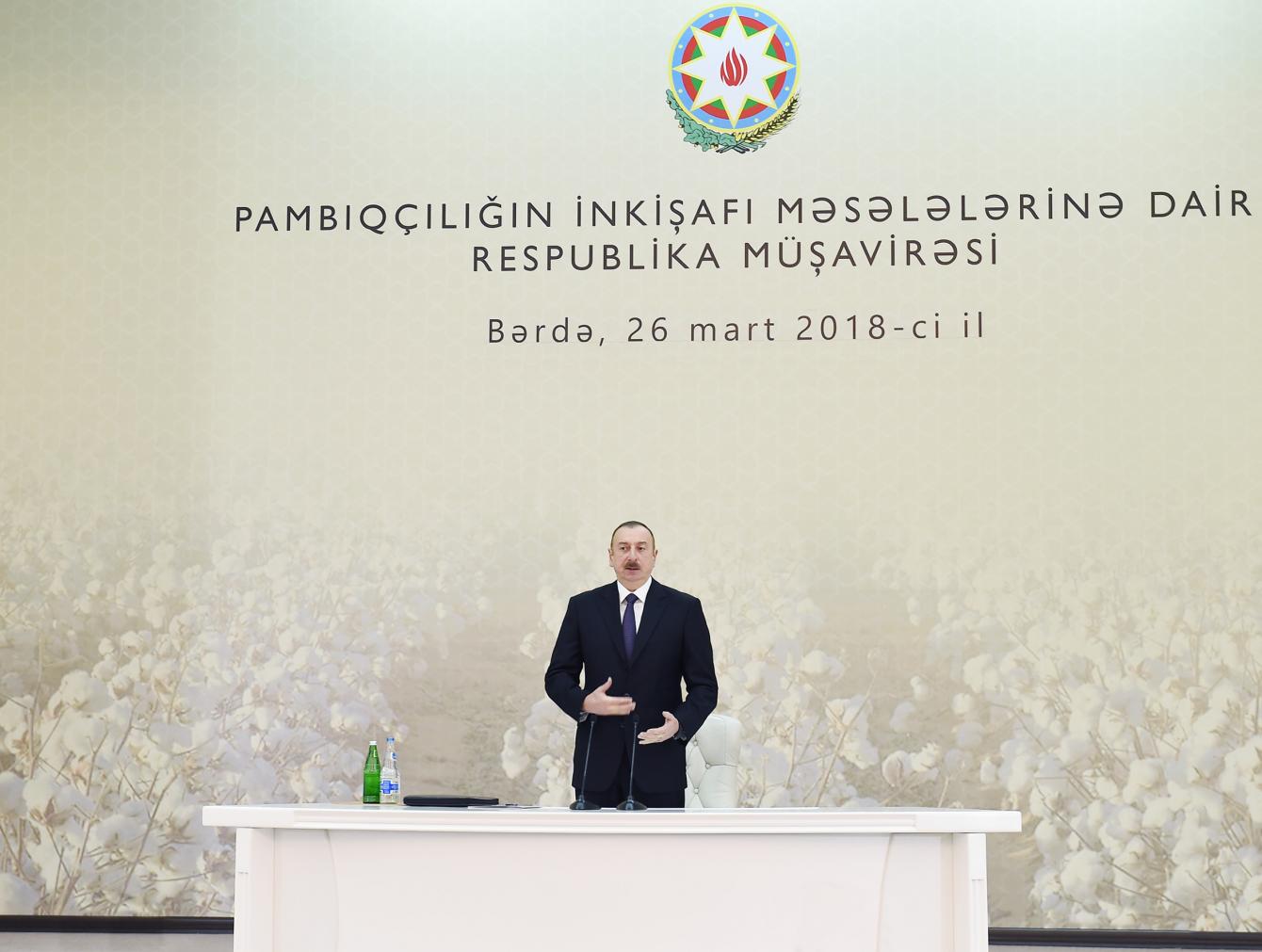
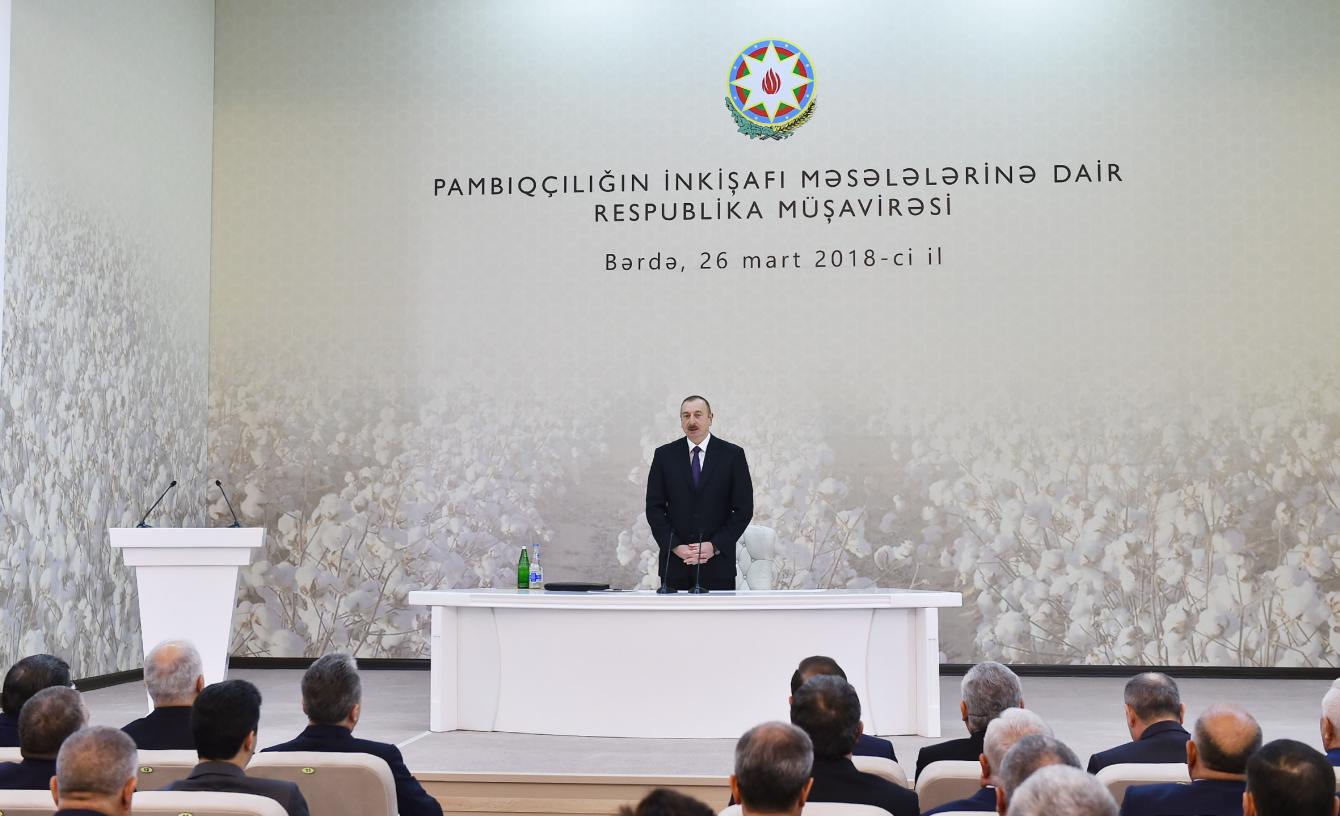
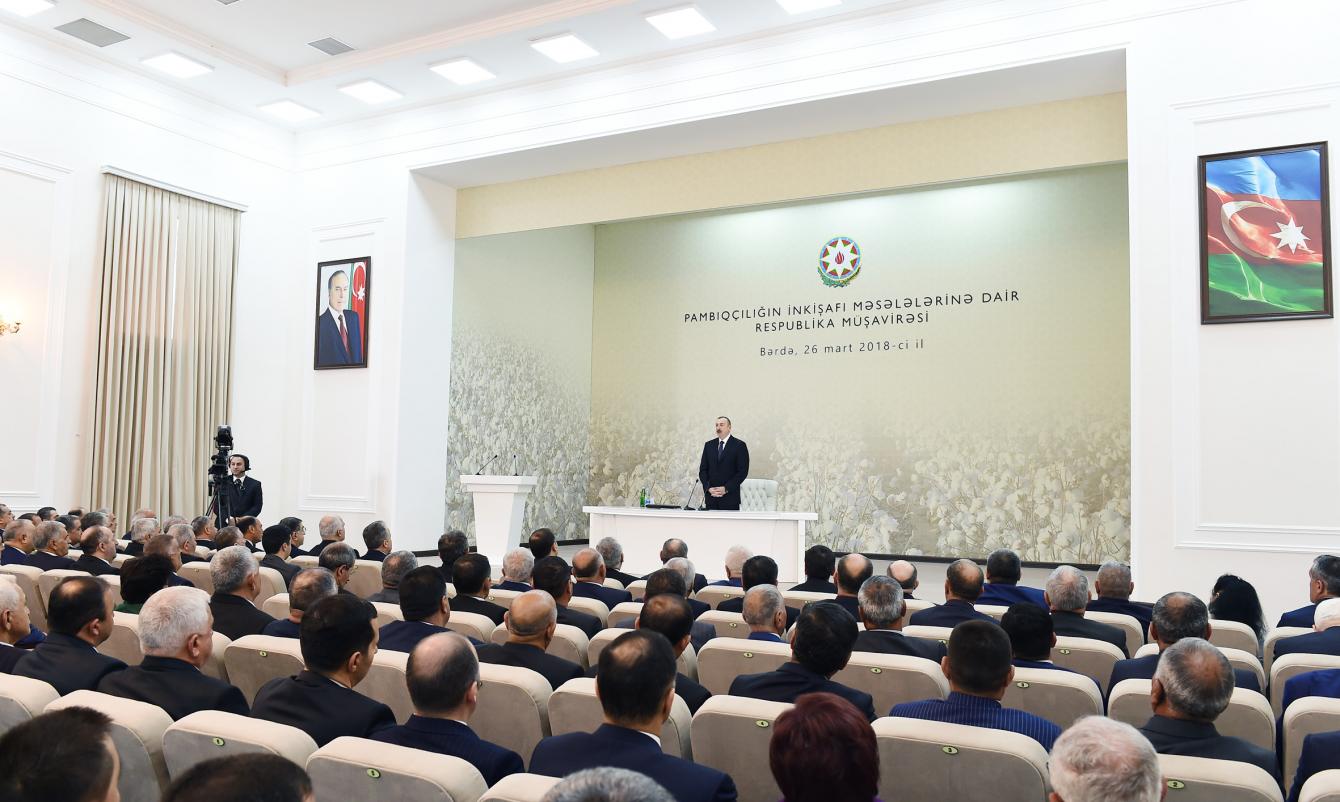
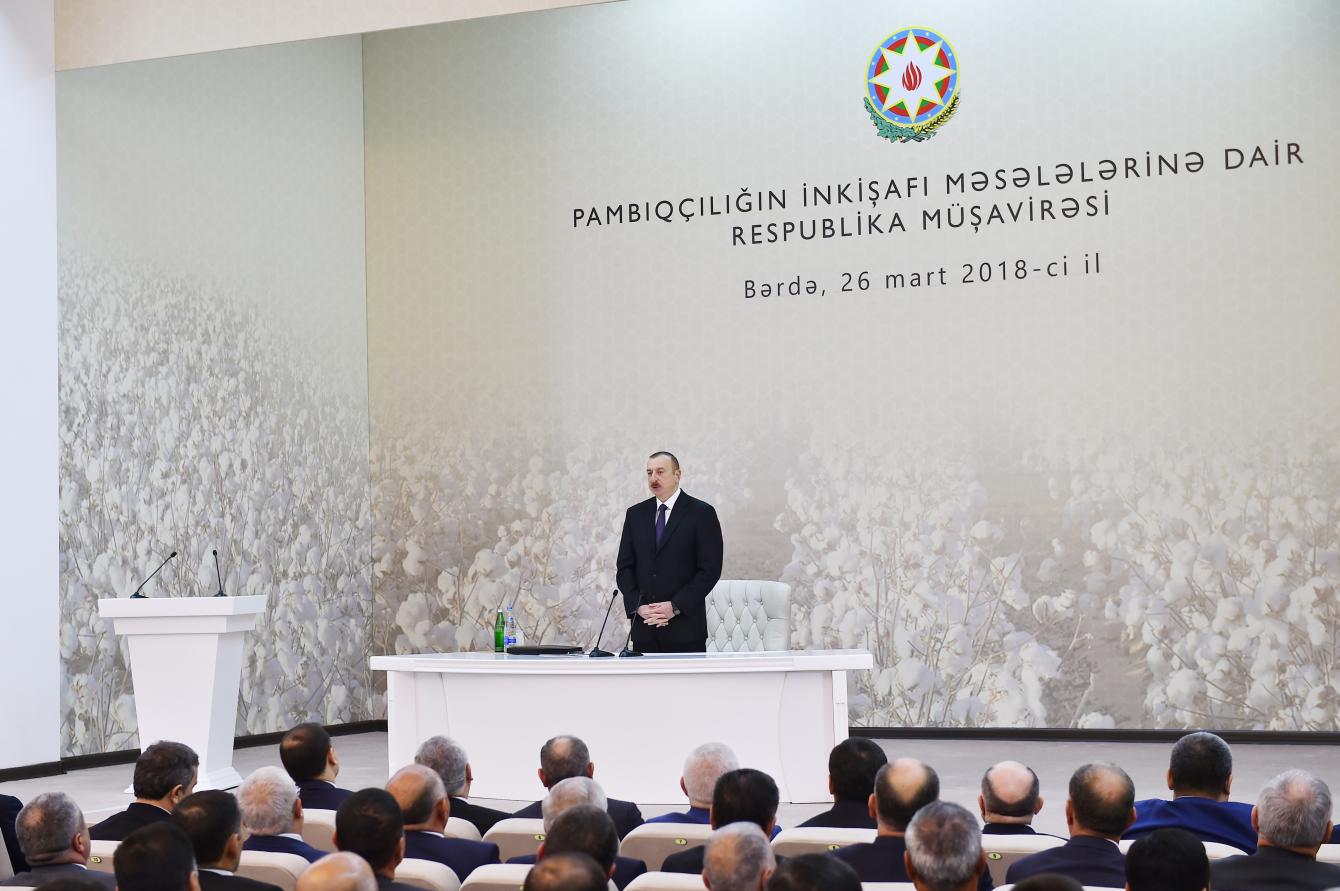
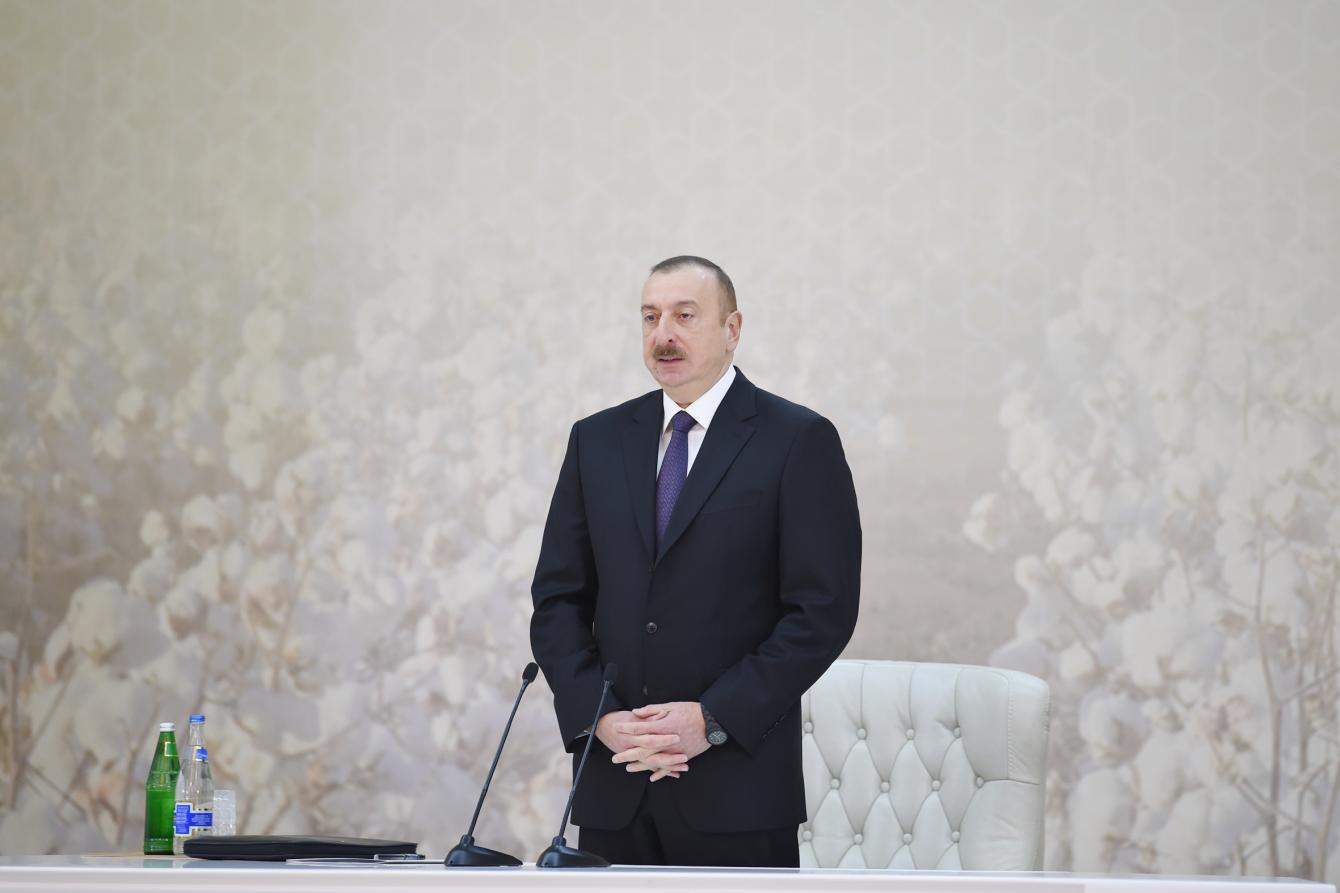
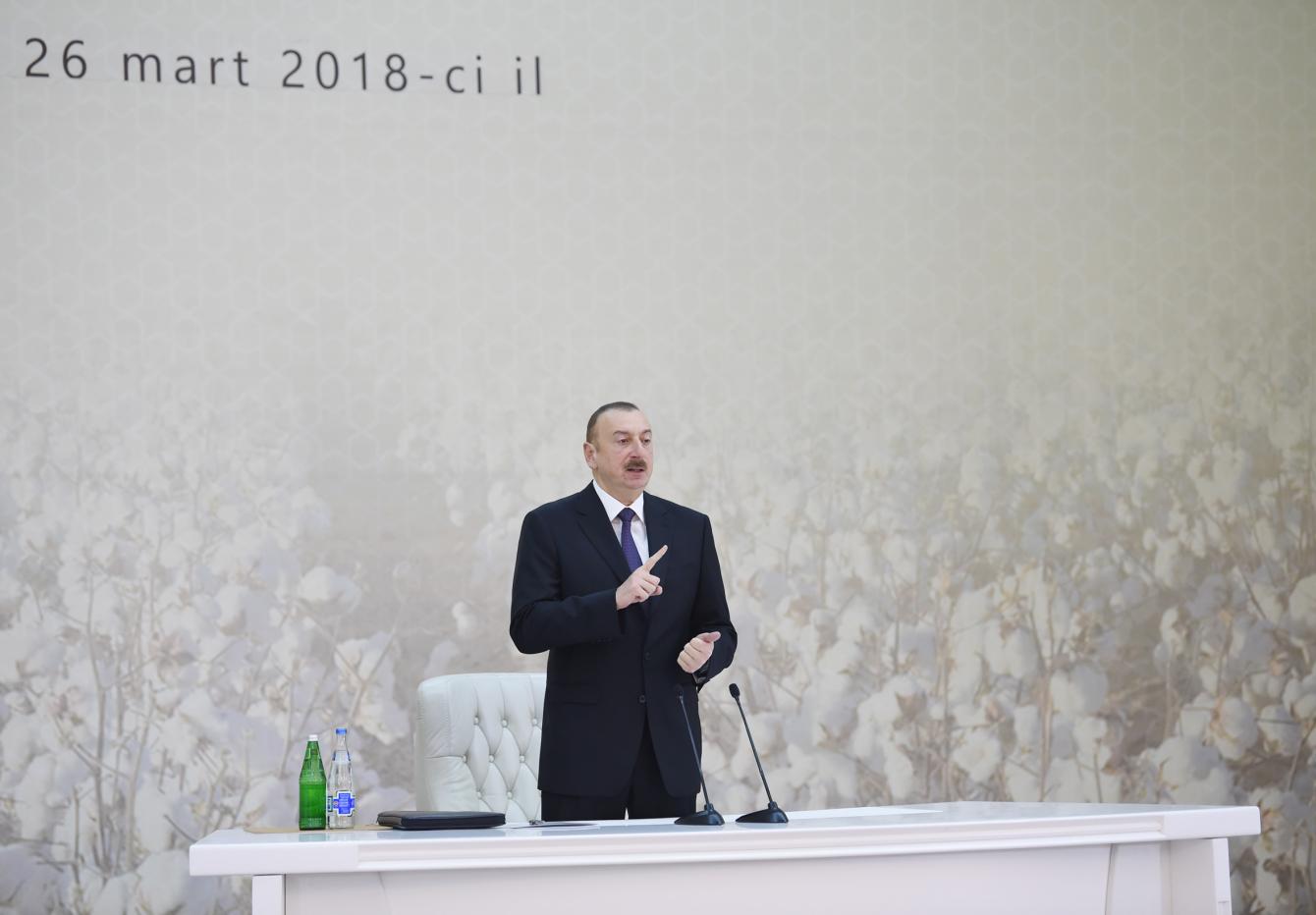
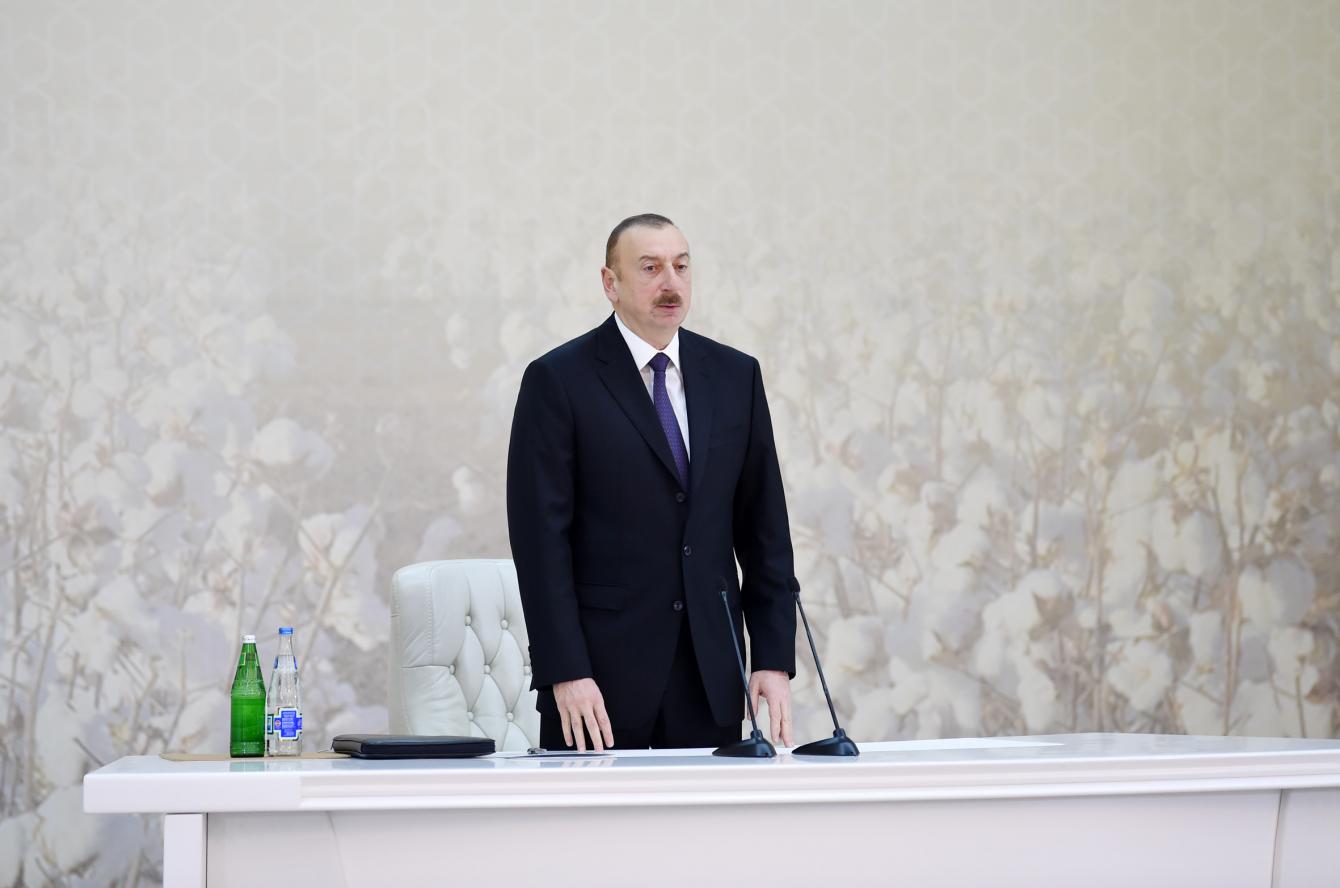
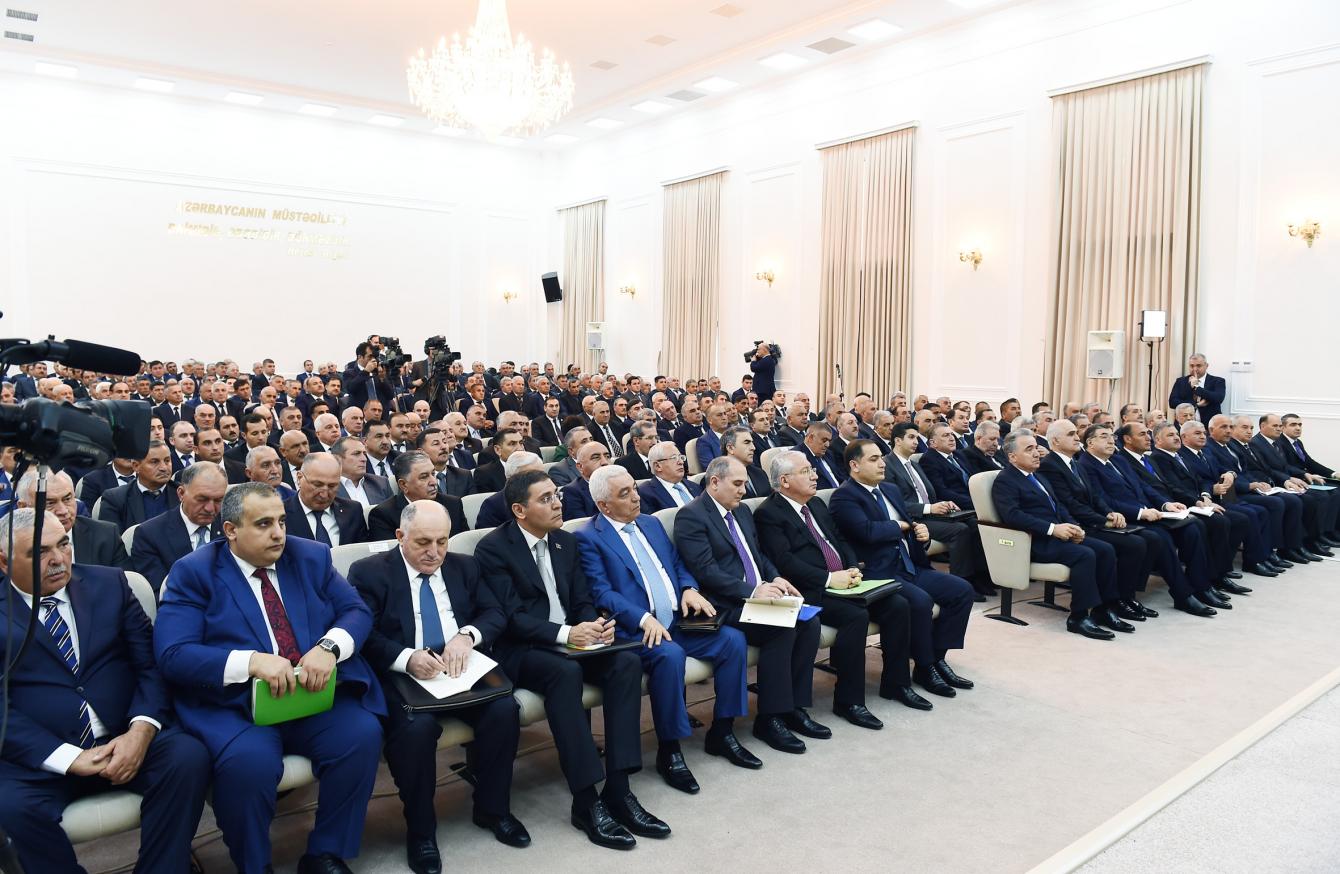
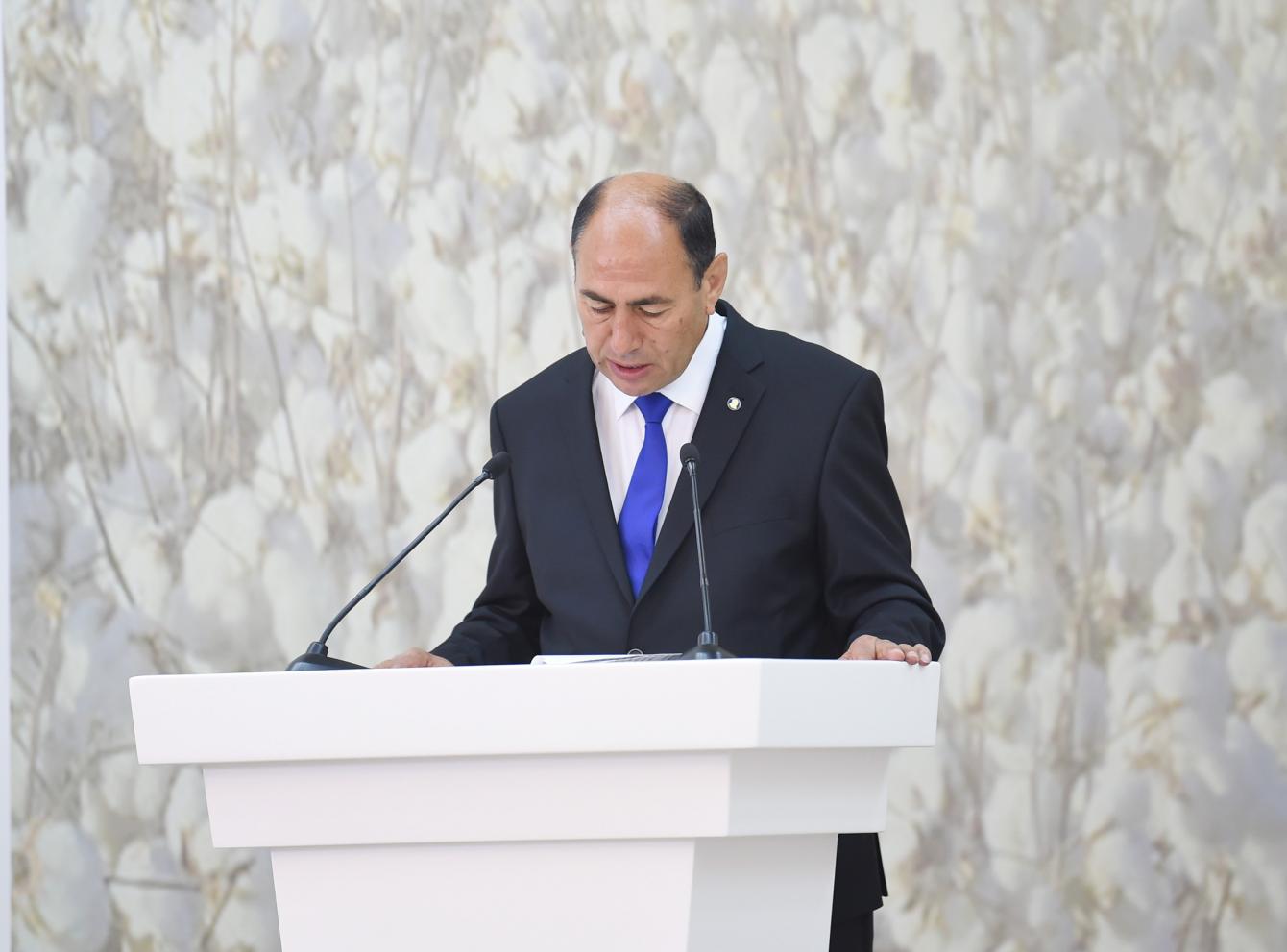
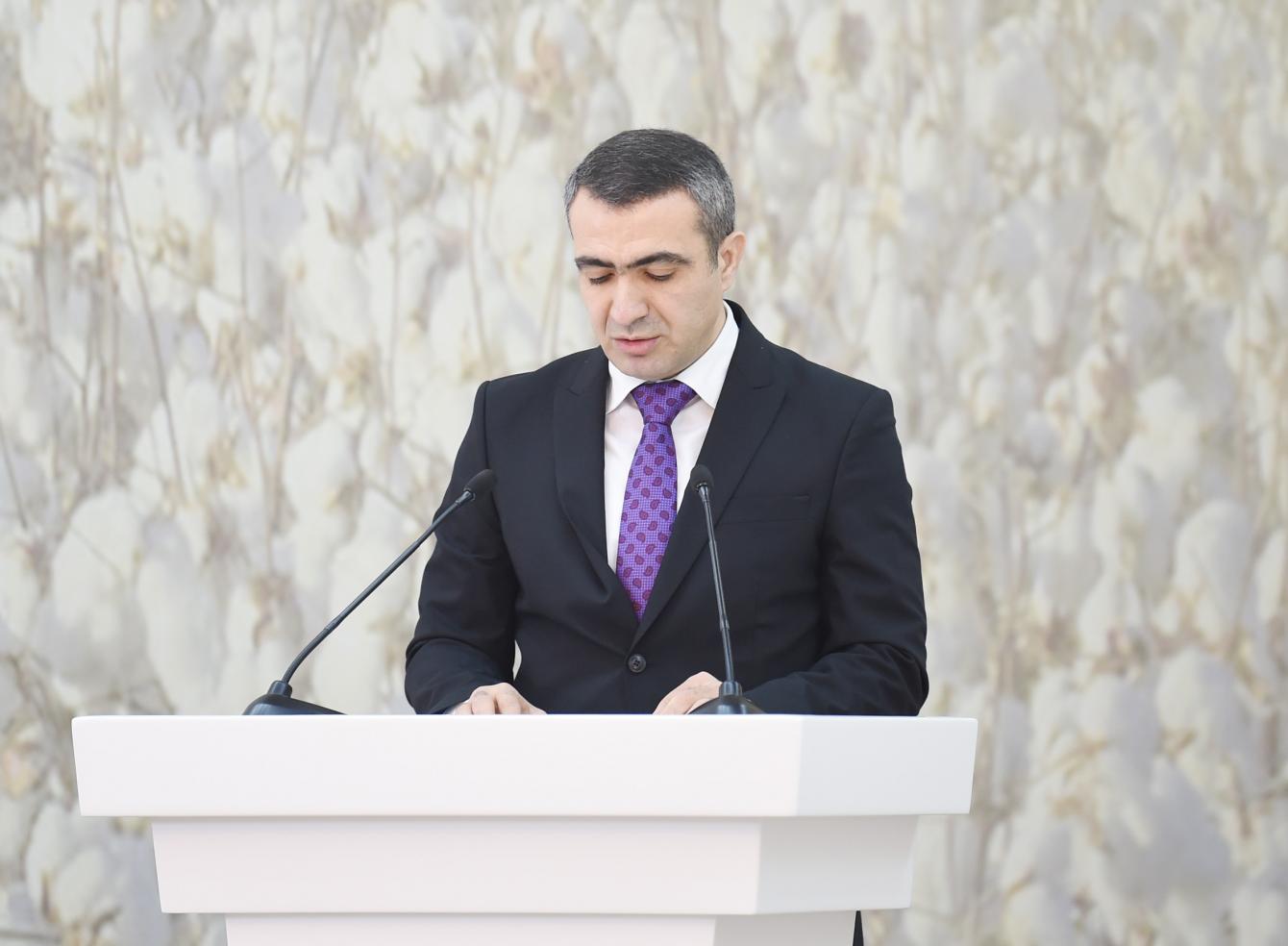
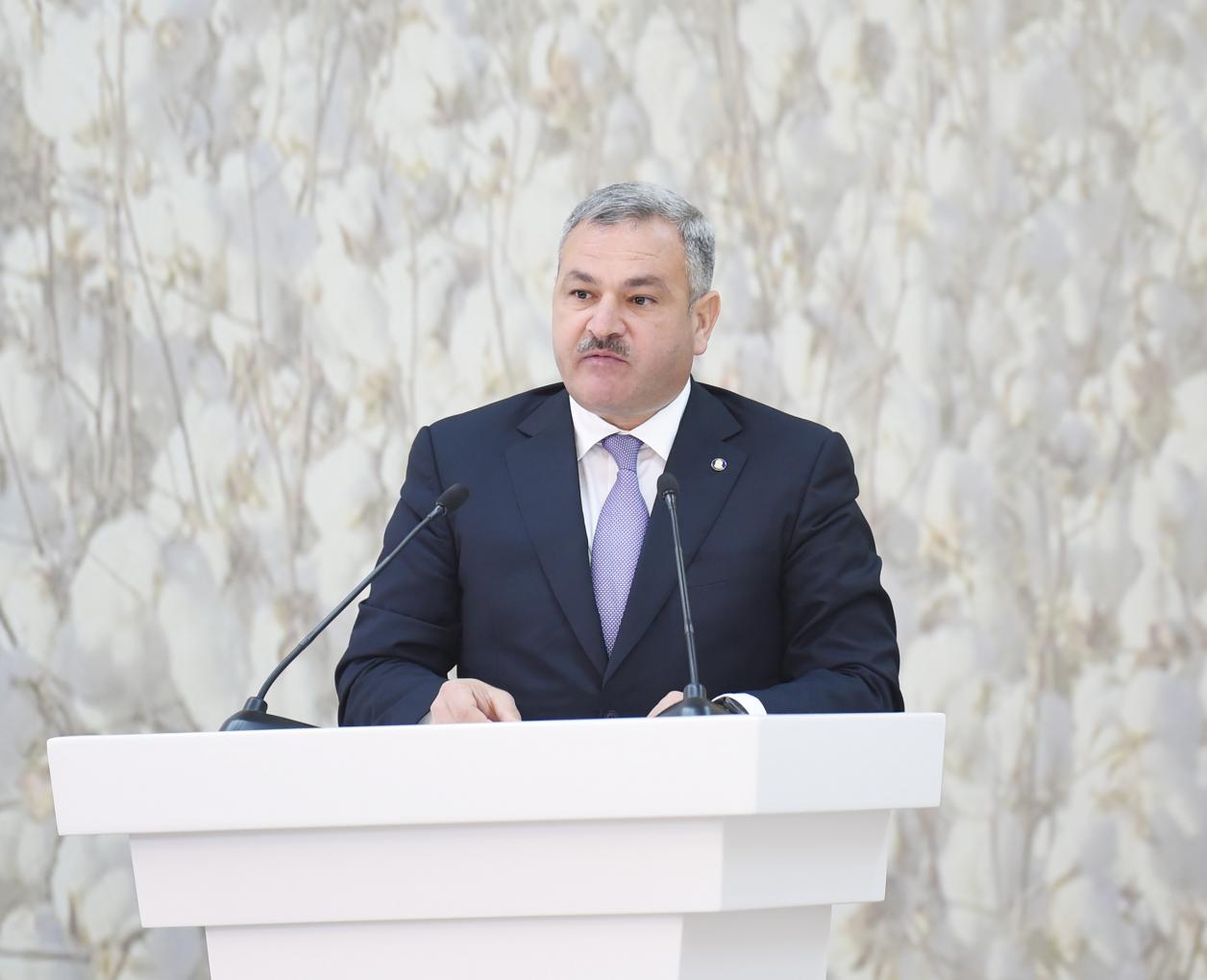
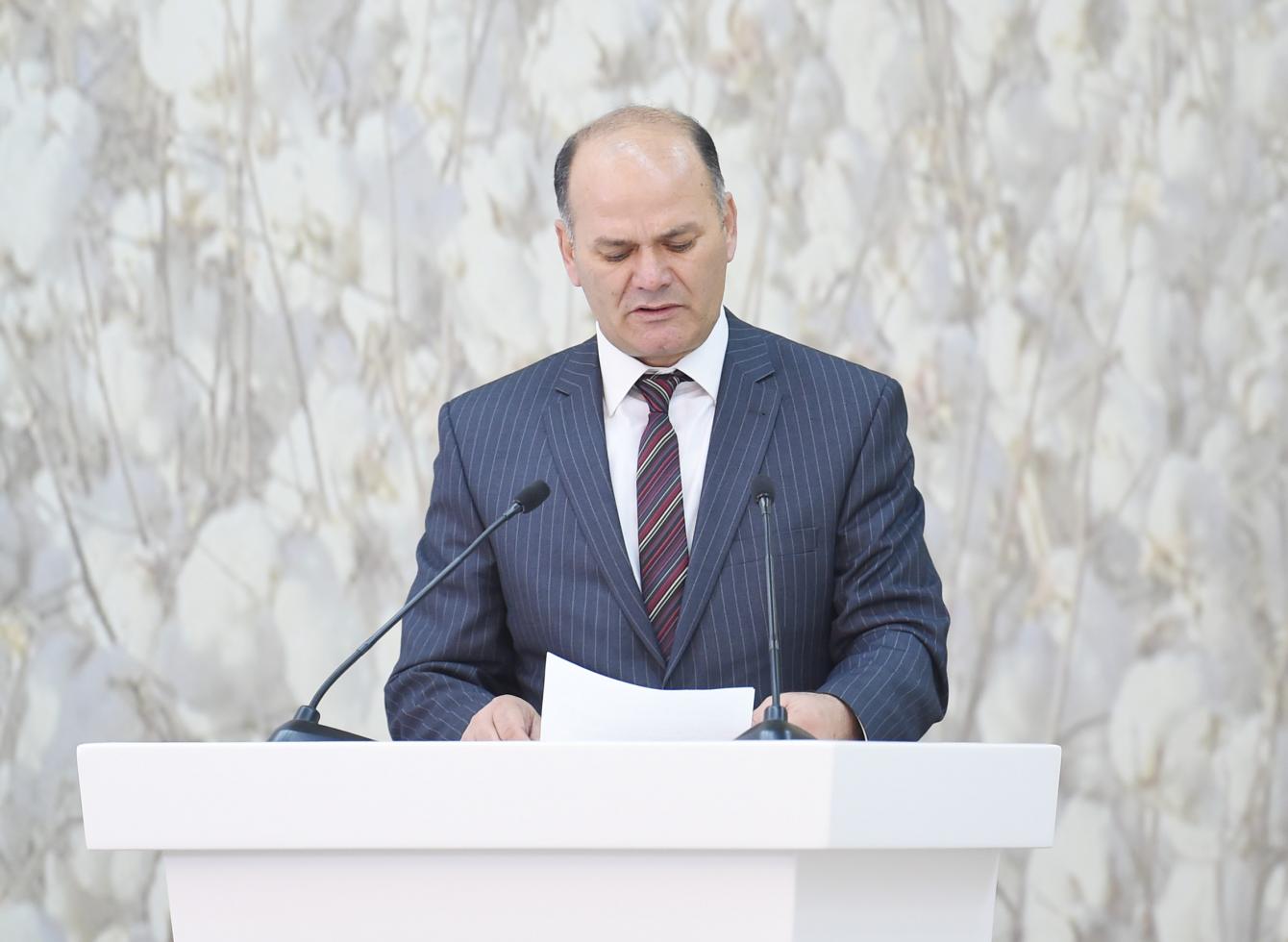
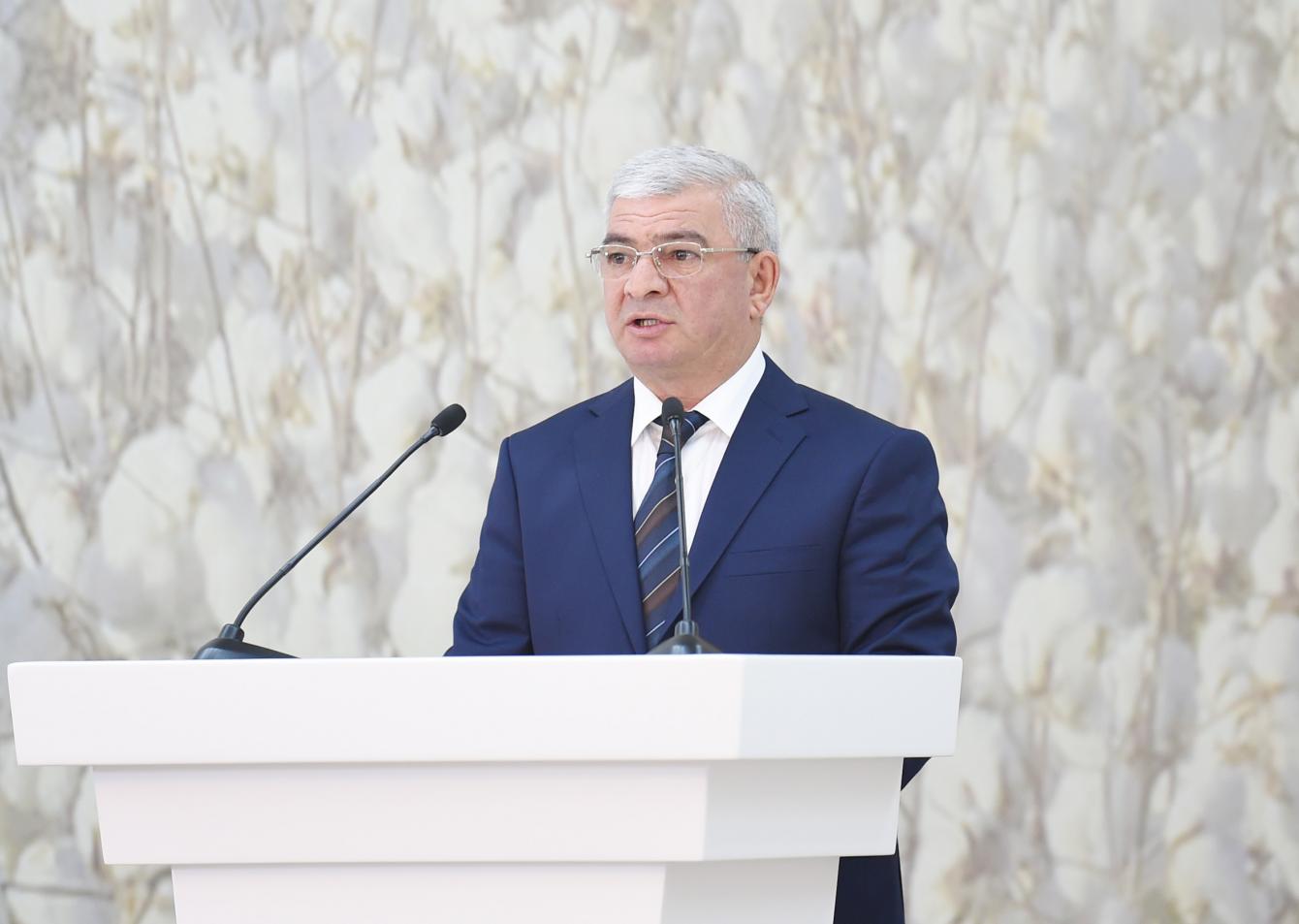

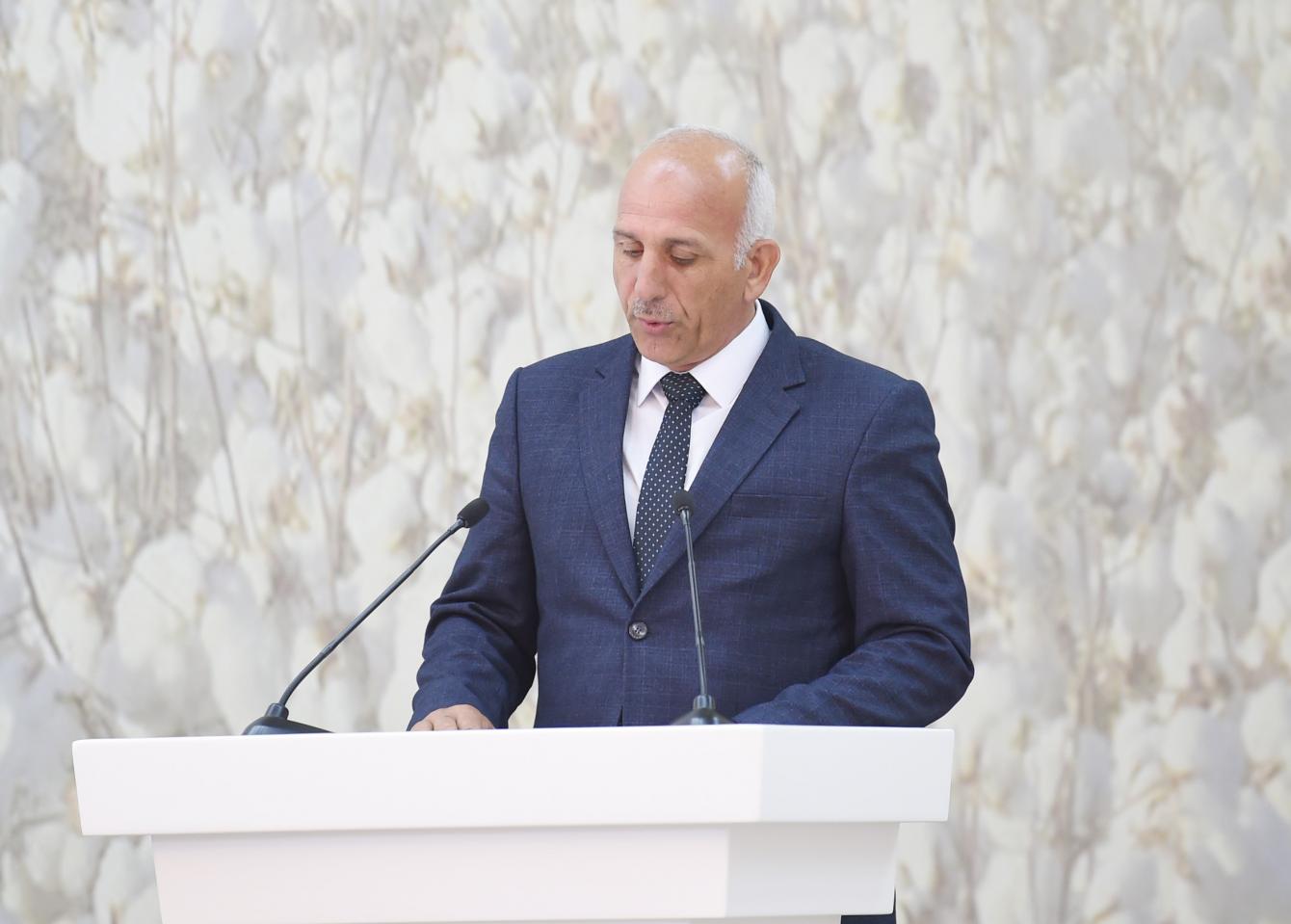
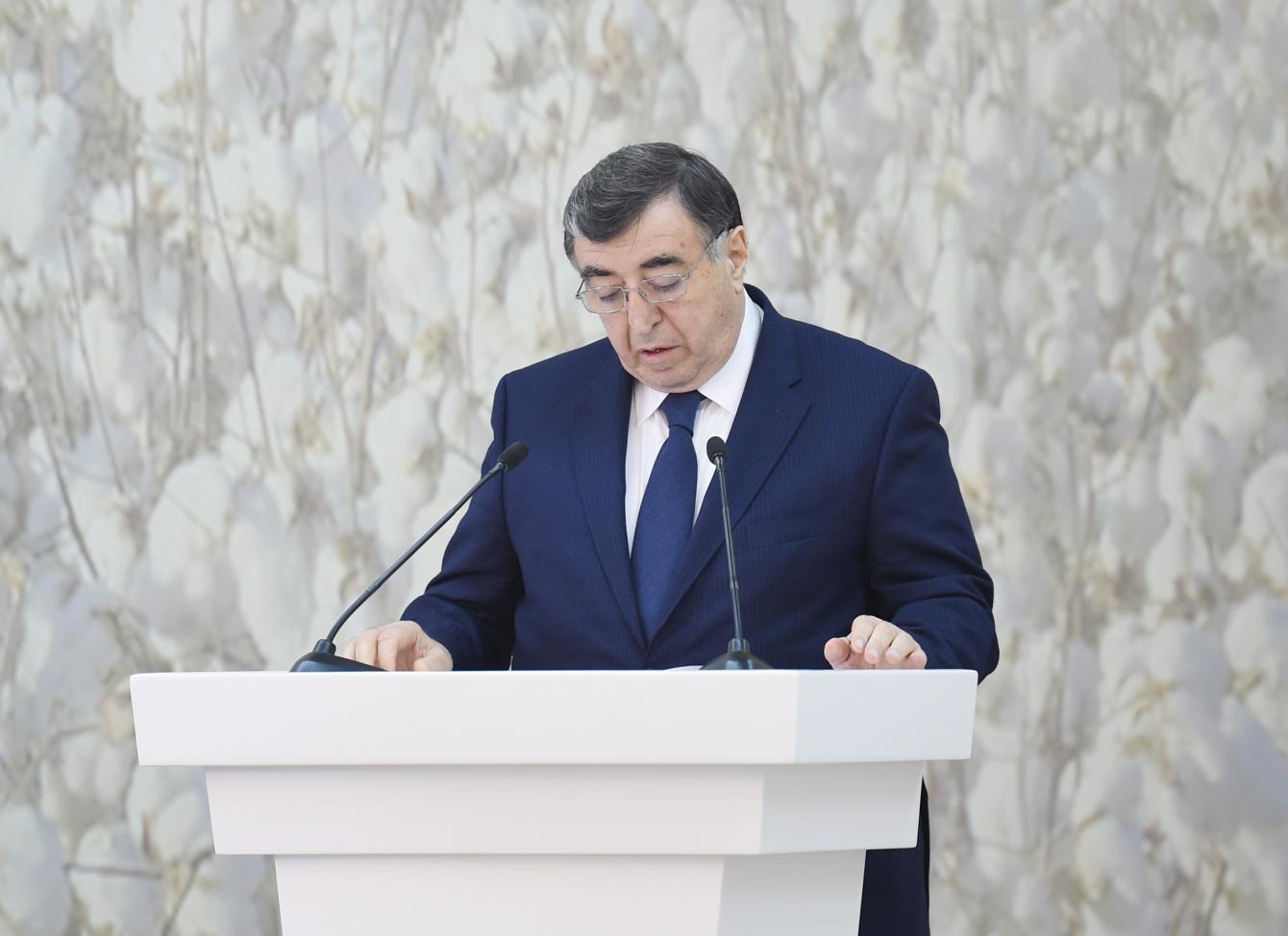
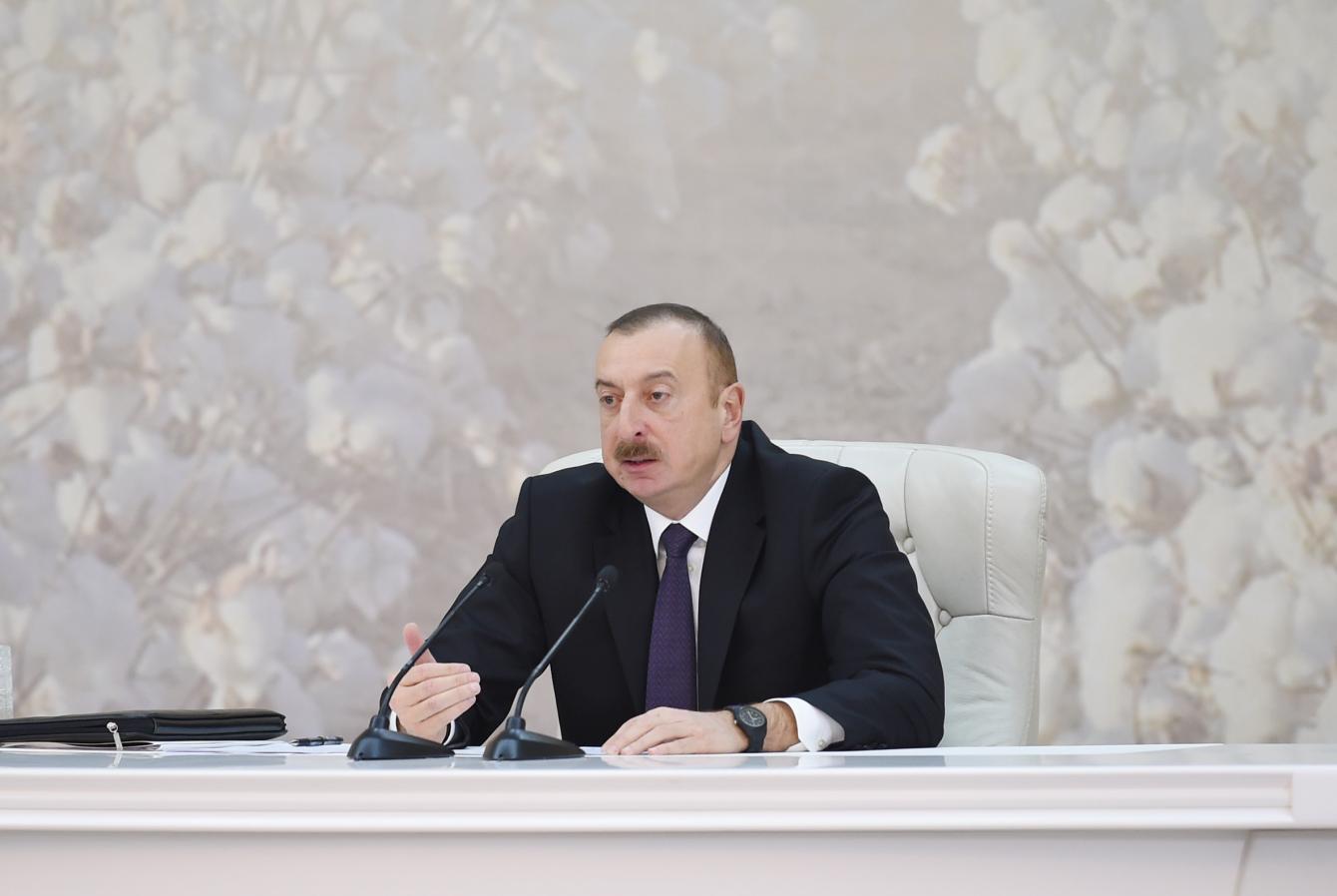
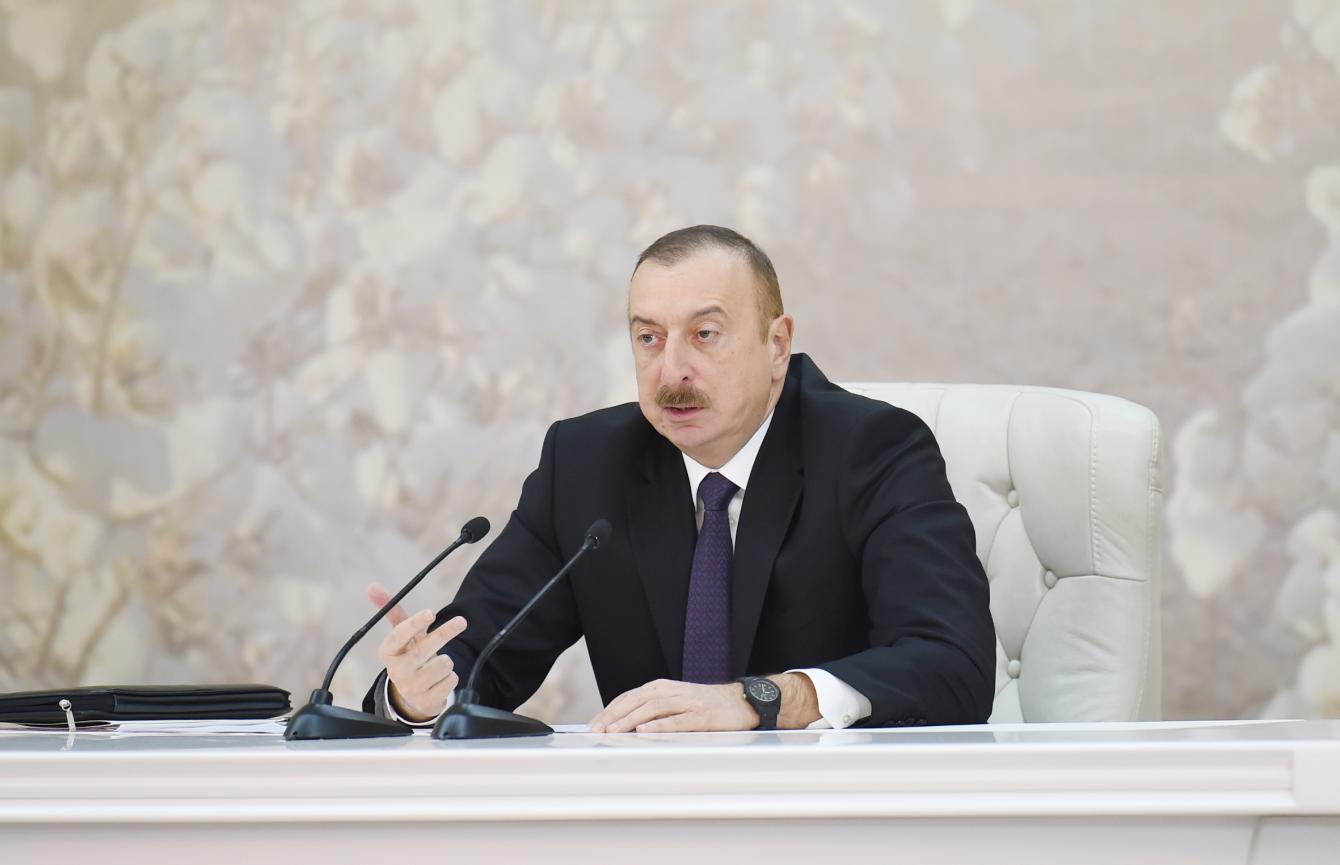
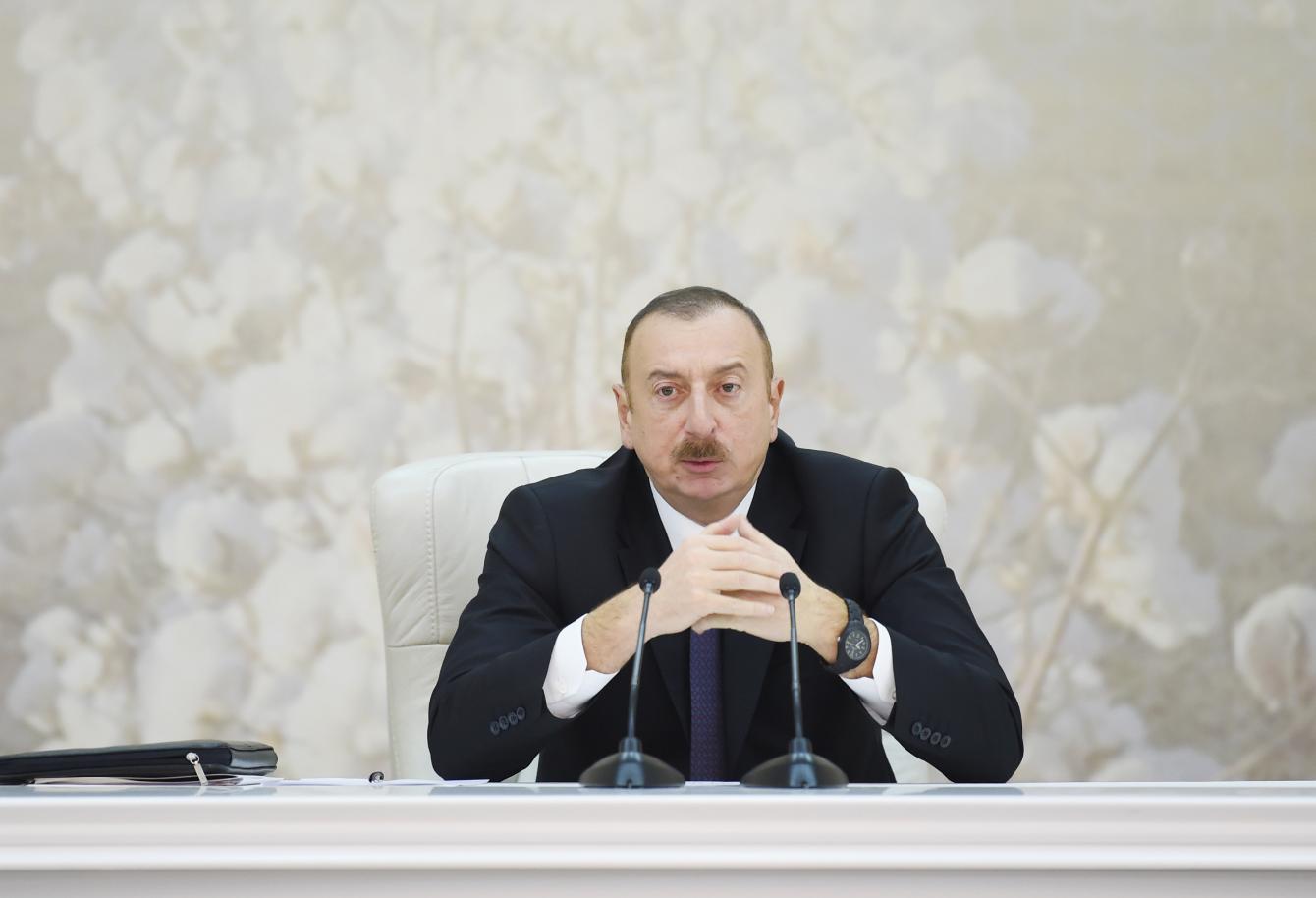
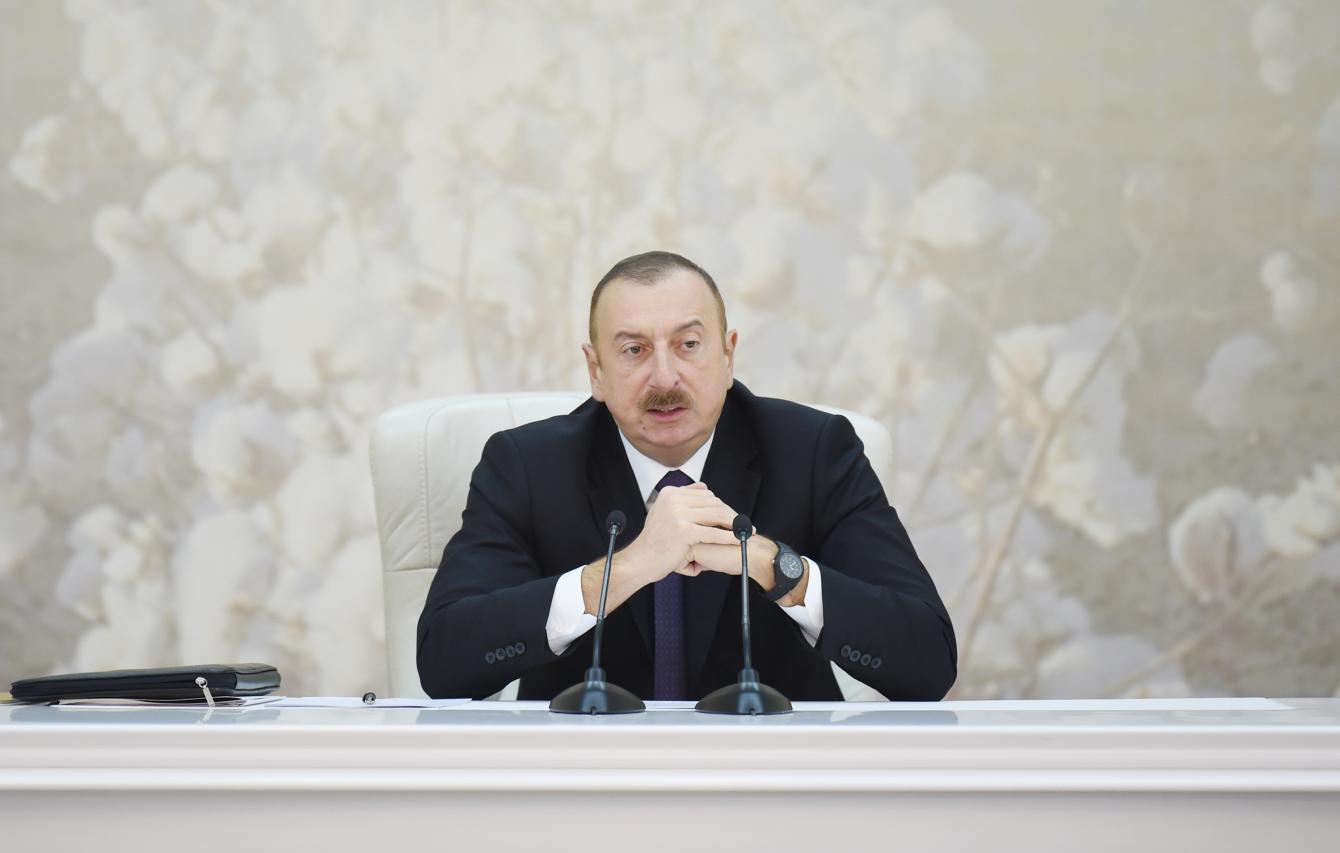
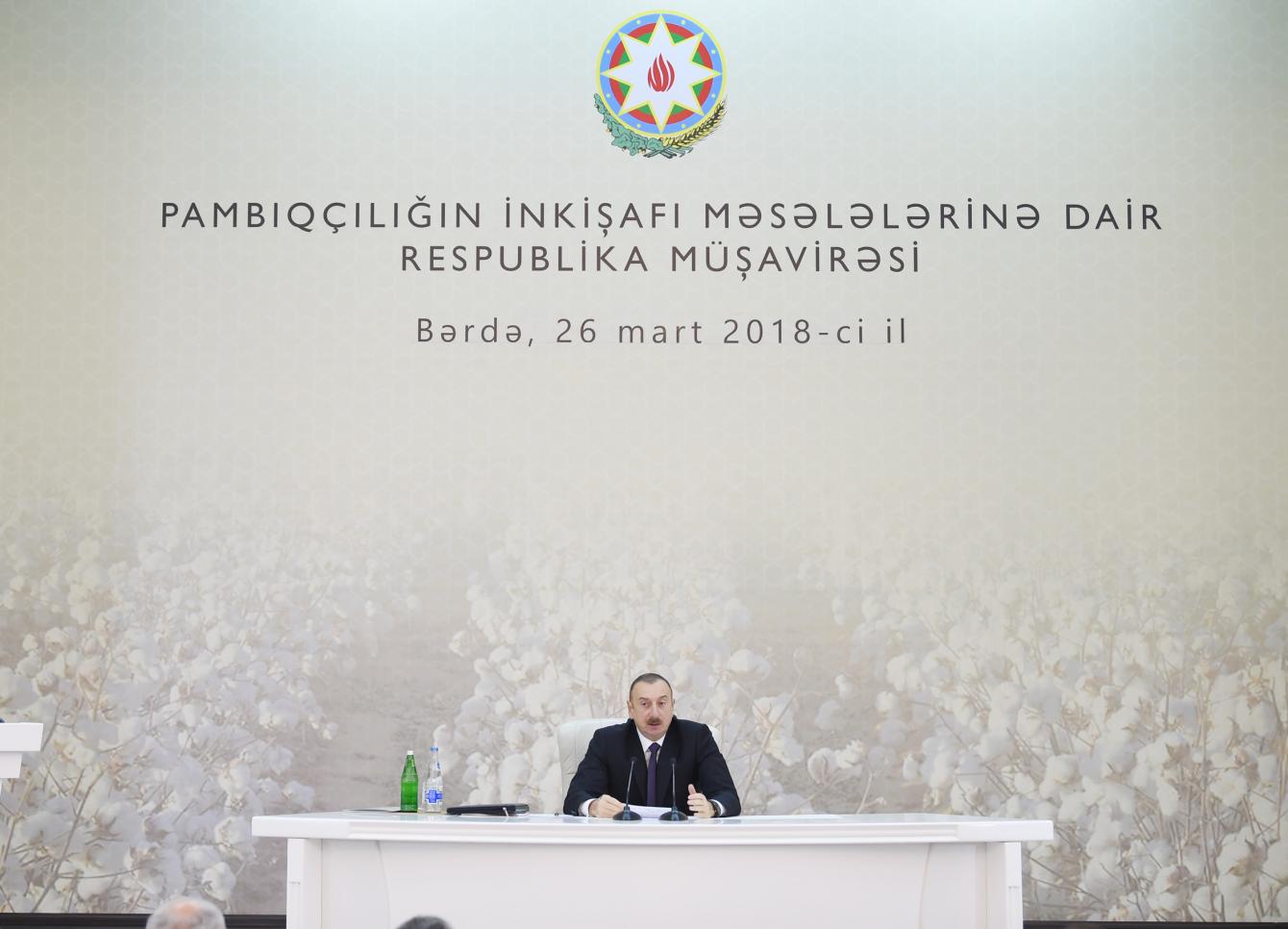
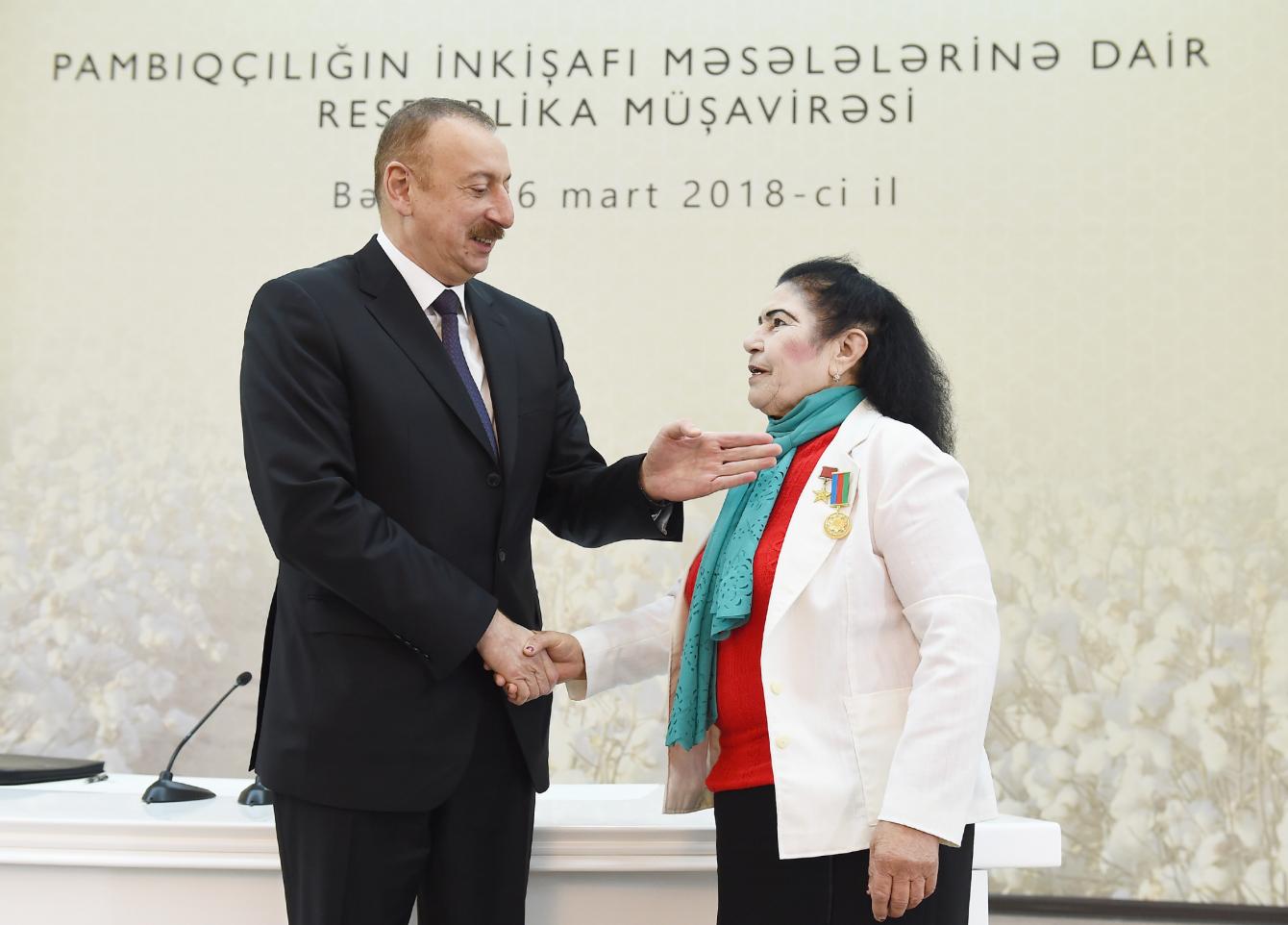
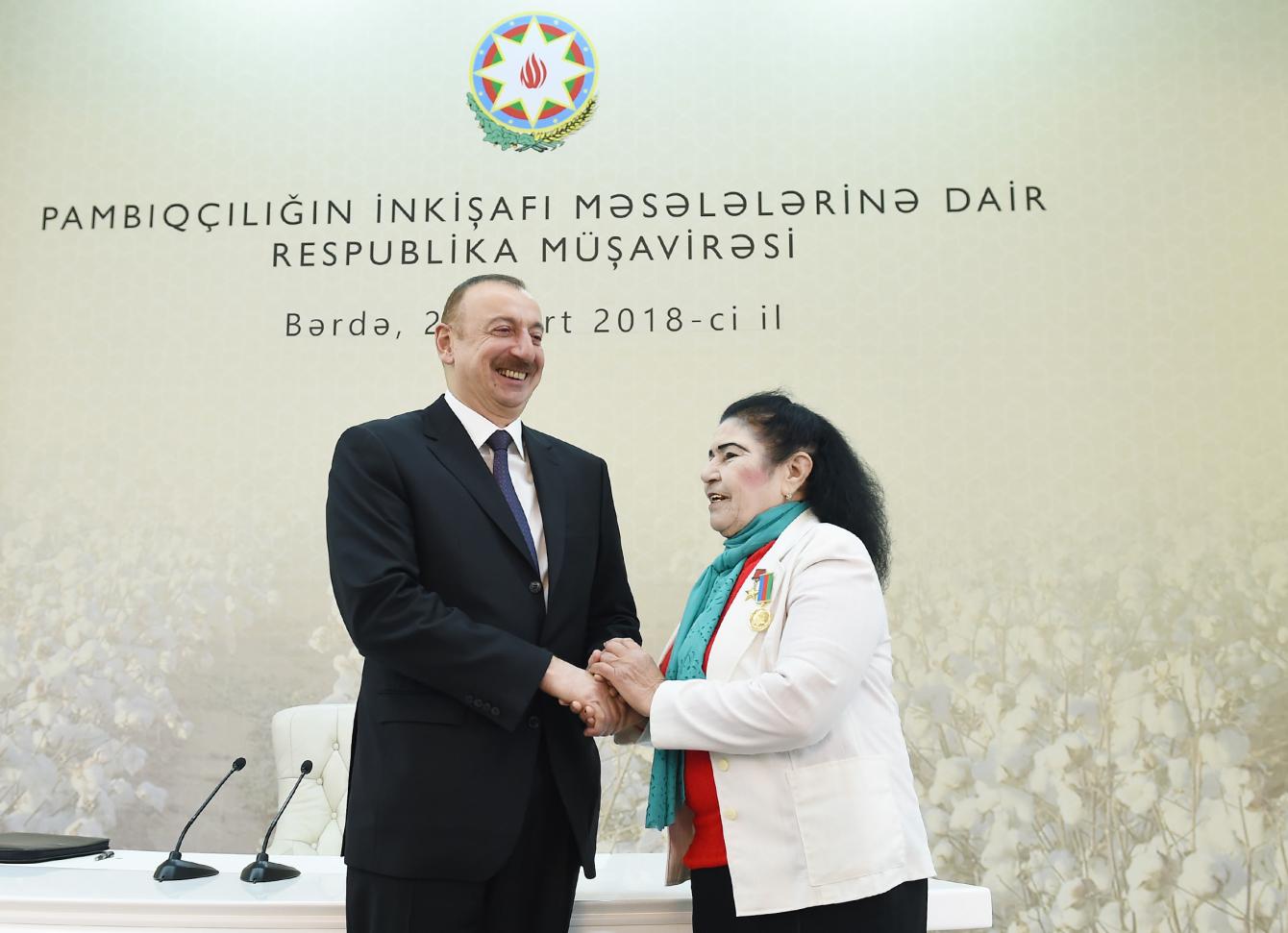
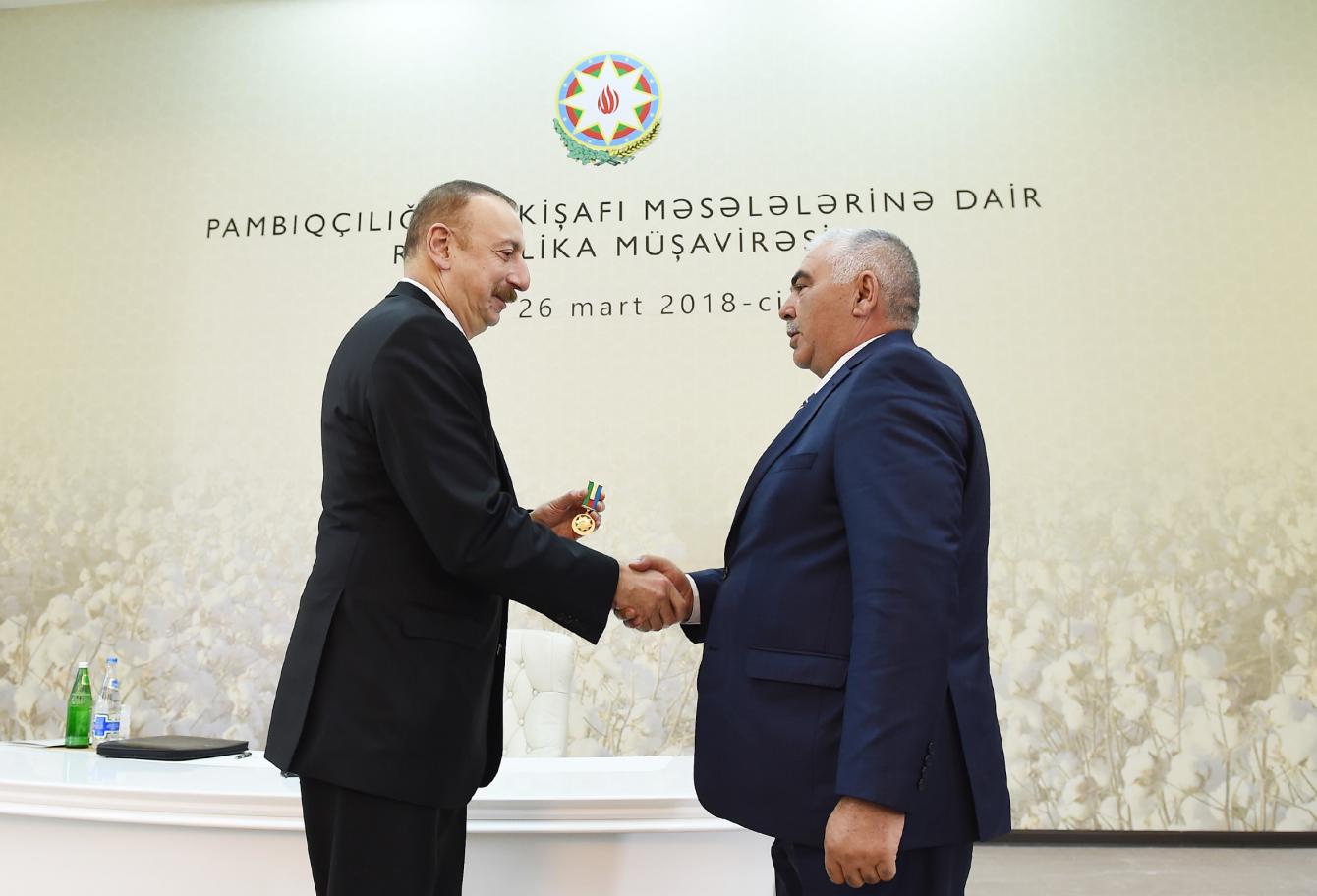
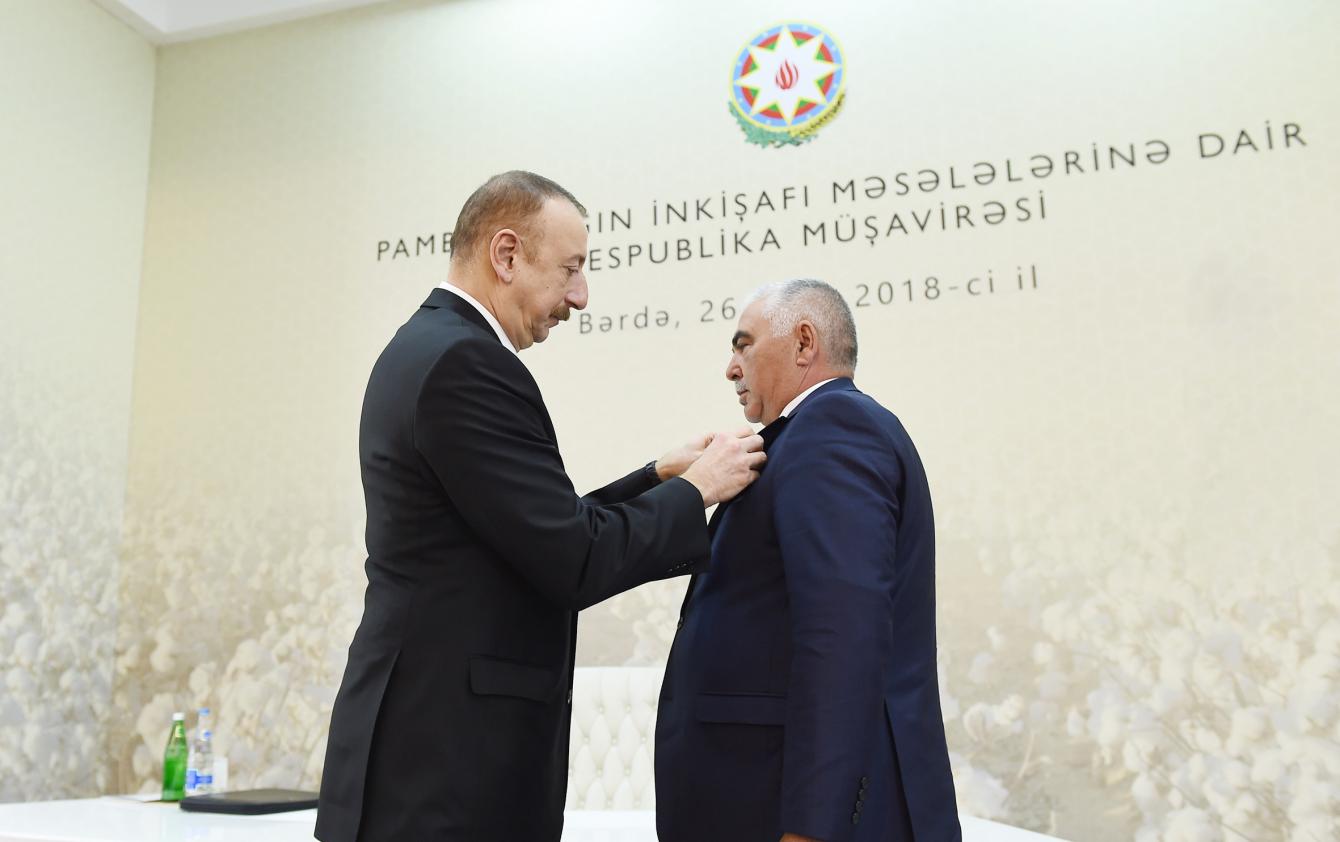
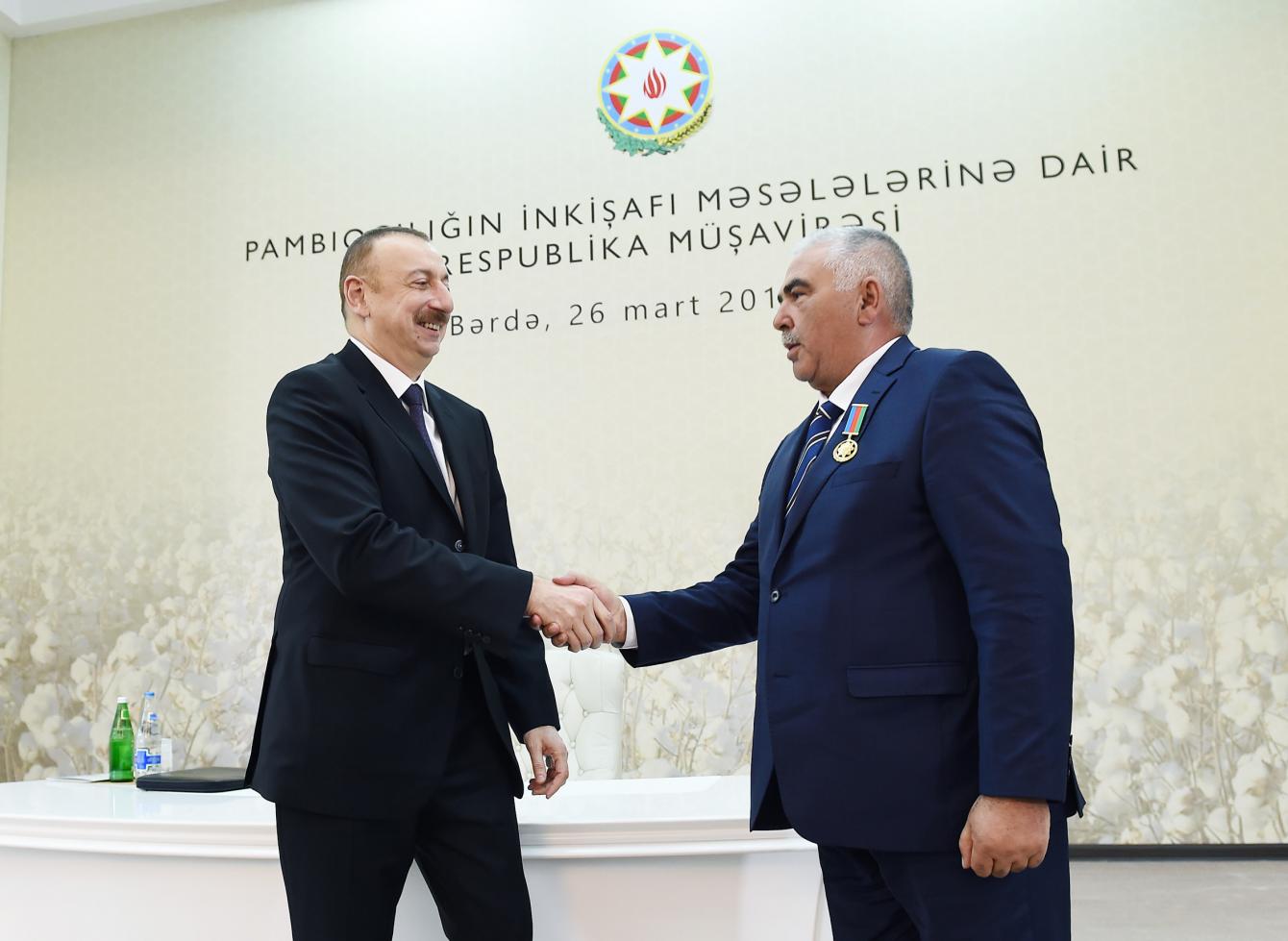
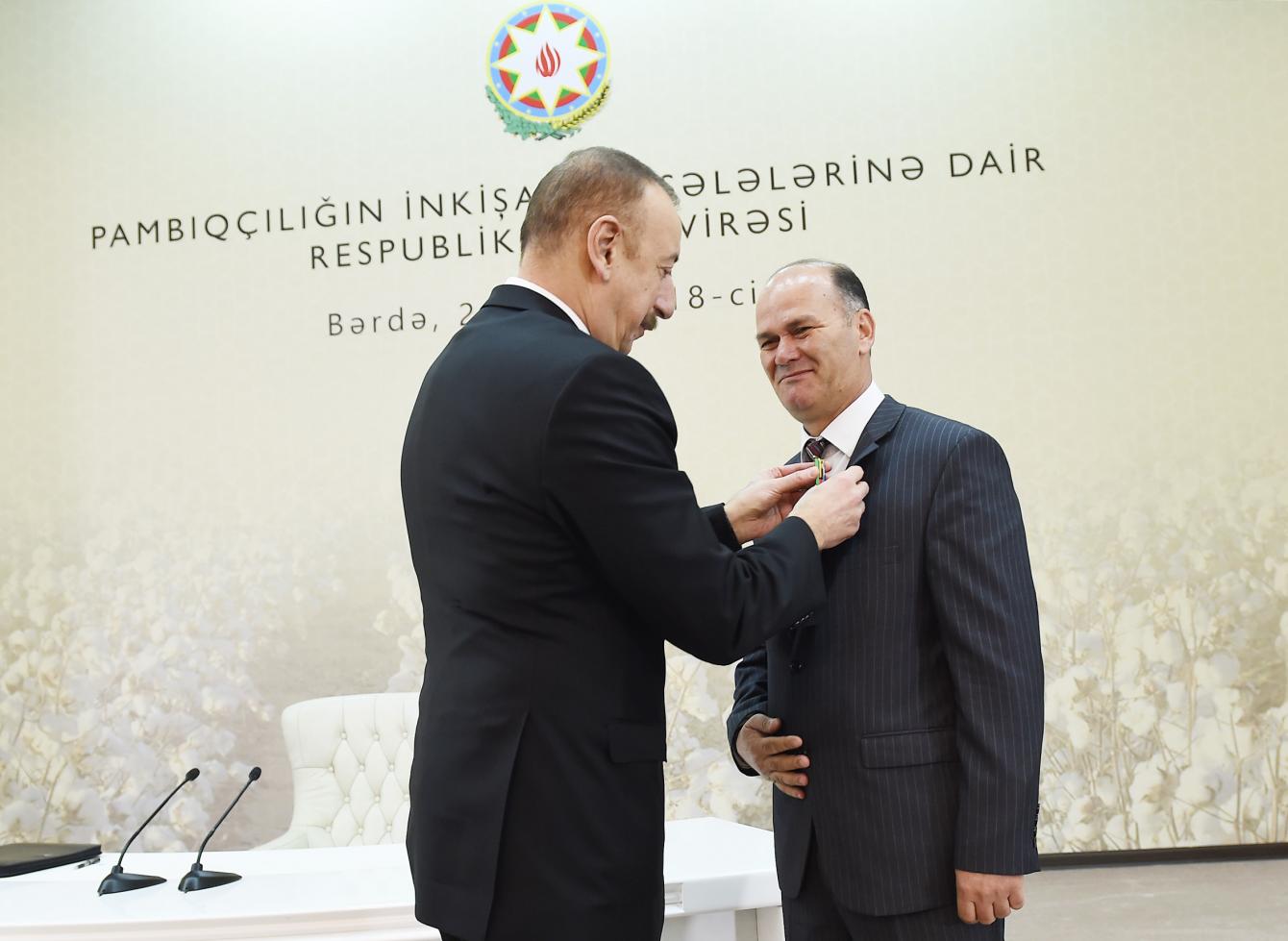
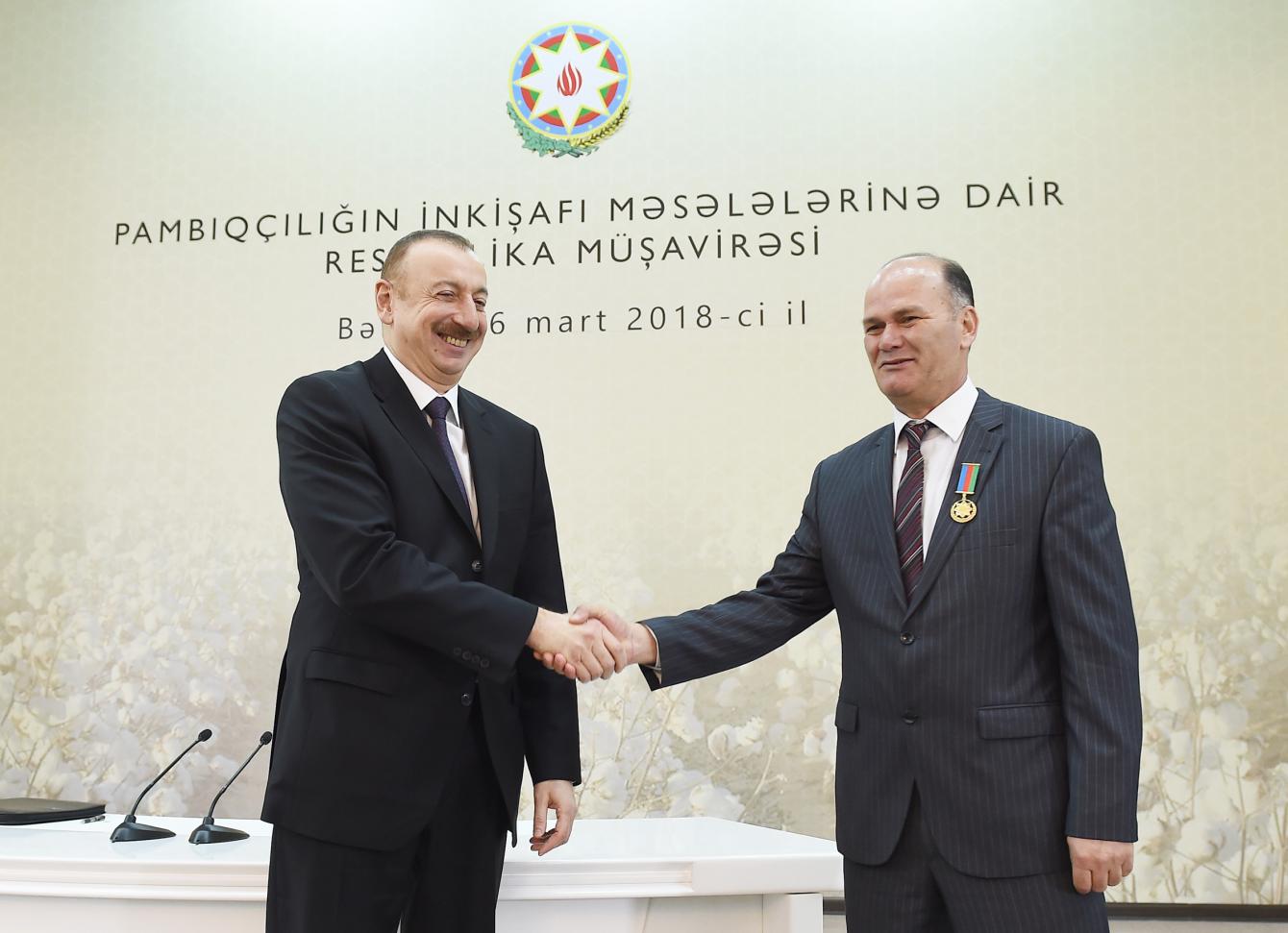

Aleksandar Vučić, President of the Republic of Serbia, made a phone call to the President of the Republic of Azerbaijan Ilham Aliyev, on April 16, briefing him on the pressures Serbia has been encountering recently and requesting the support of the friendly...
16 April 2024, 20:36Dear Mr. Pellegrini,
I sincerely congratulate you on your election as the President of the Slovak Republic.
The development of friendly relations with Slovakia holds great significance for us. Currently, there are good opportunities for enriching the...
15 April 2024, 13:06Prime Minister Muhammad Shehbaz Sharif of the Islamic Republic of Pakistan made a phone call to President Ilham Aliyev of the Republic of Azerbaijan on April 9.
Pakistan's Prime Minister congratulated the head of state on the occasion of Eid al-Fitr and wished...
09 April 2024, 19:52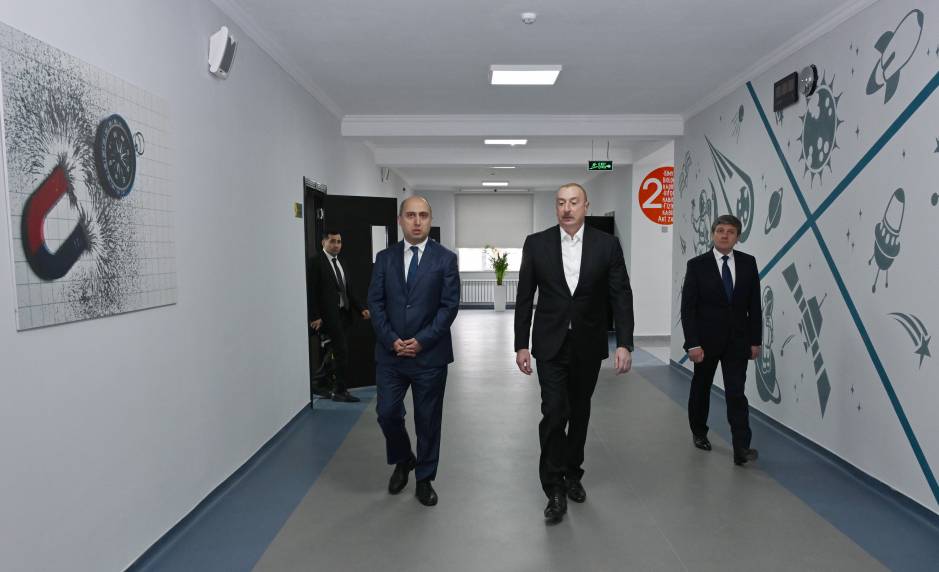
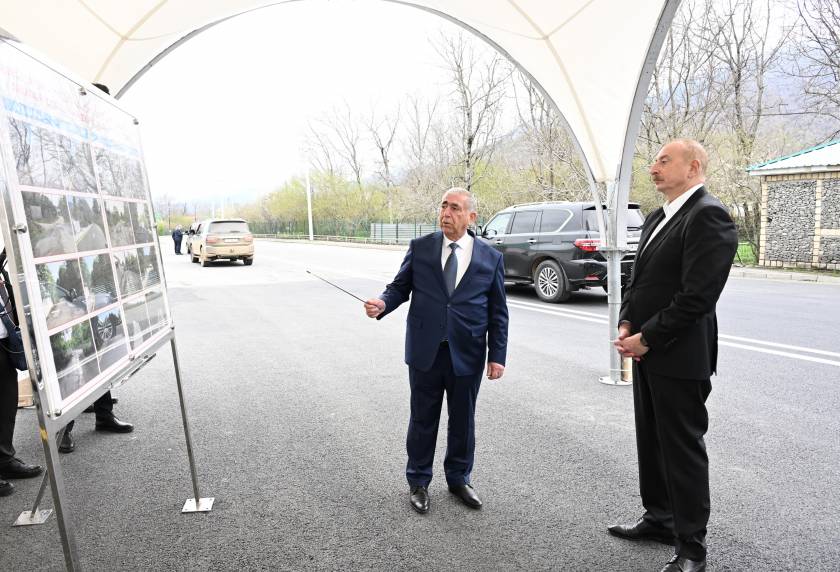
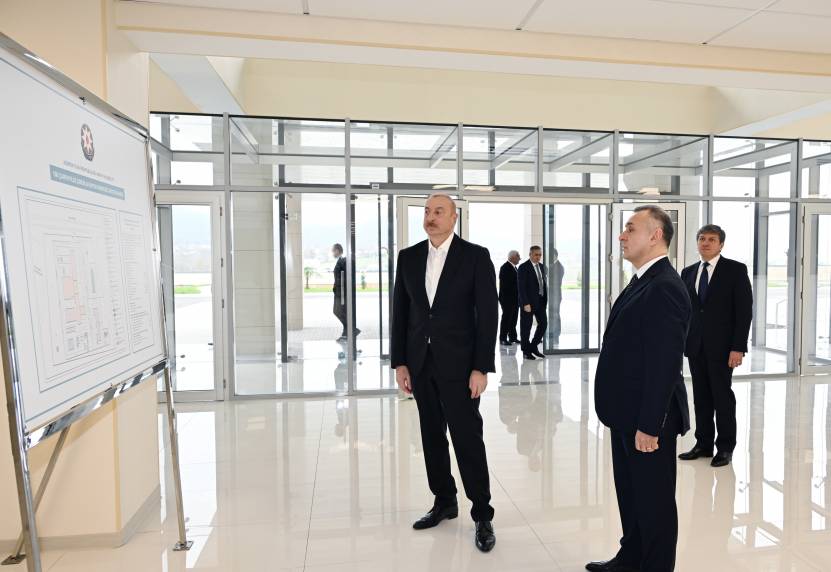
On April 9, President Recep Tayyip Erdogan of the Republic of Türkiye made a phone call to President Ilham Aliyev of the Republic of Azerbaijan.
The President of Türkiye congratulated President Ilham Aliyev on the occasion of Eid al-Fitr and wished the people of...
09 April 2024, 15:39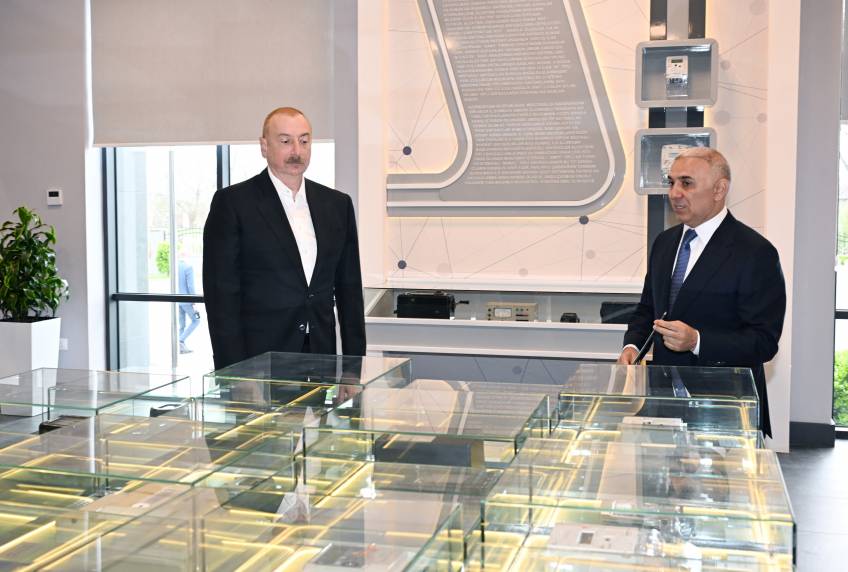
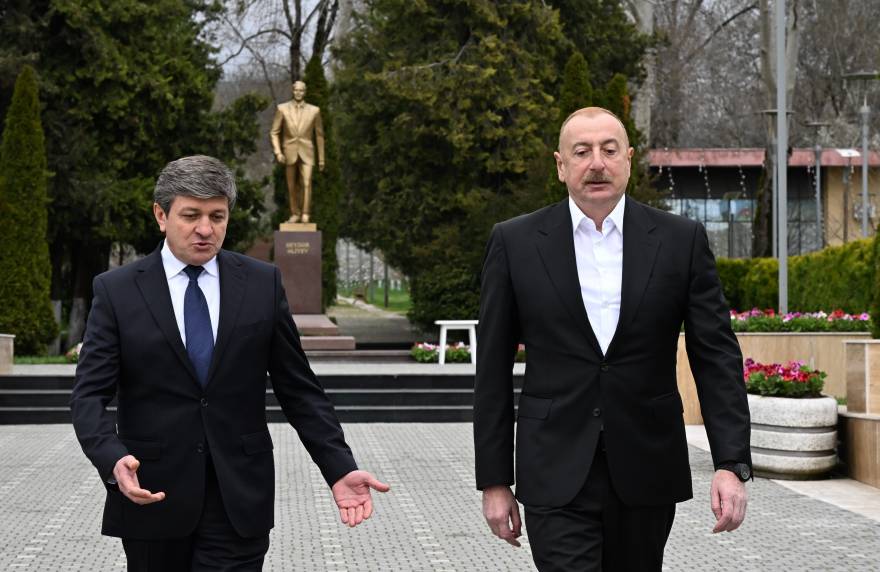
President of the Republic of Azerbaijan Ilham Aliyev has toured the Qabala district.
The head of state visited the monument to National Leader Heydar Aliyev erected in the city of Qabala and participated in the opening ceremonies of the 110/35/10 kV "Hajialili"...
09 April 2024, 15:14